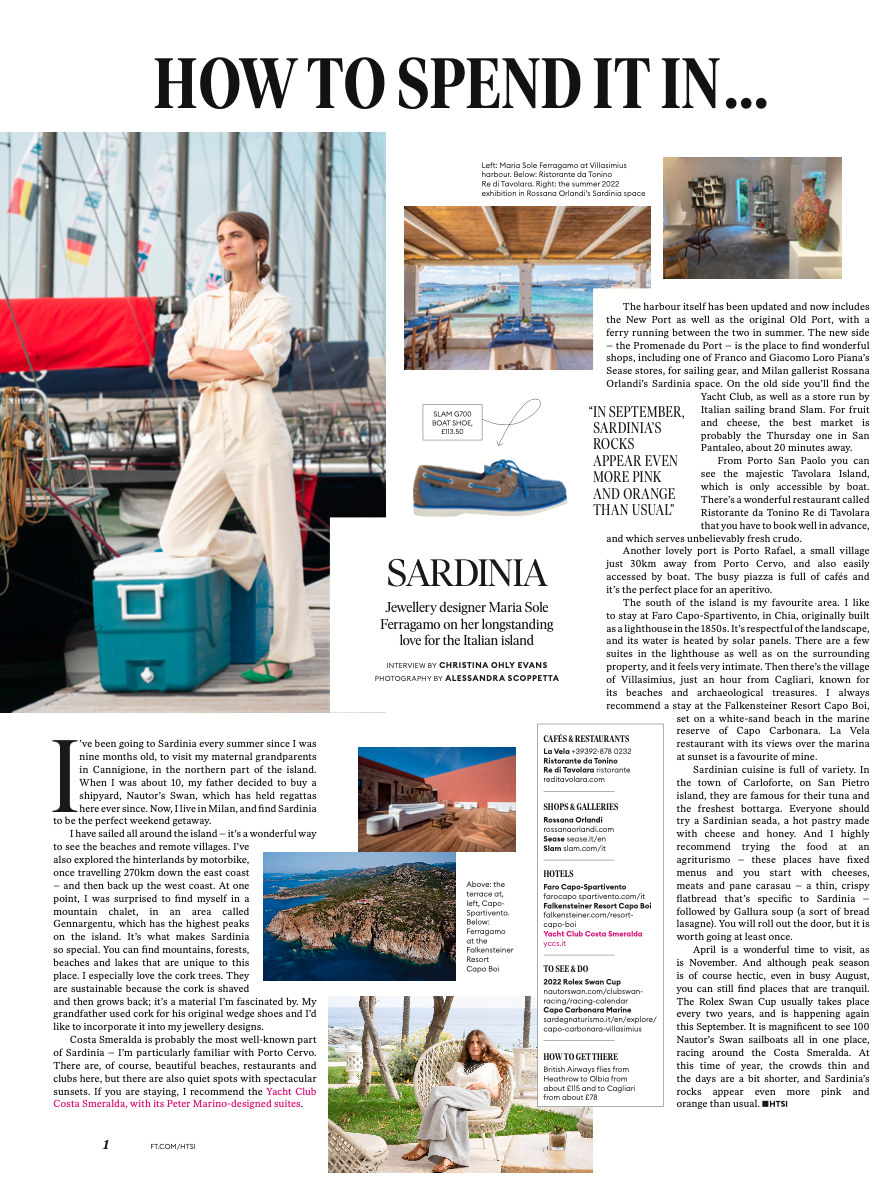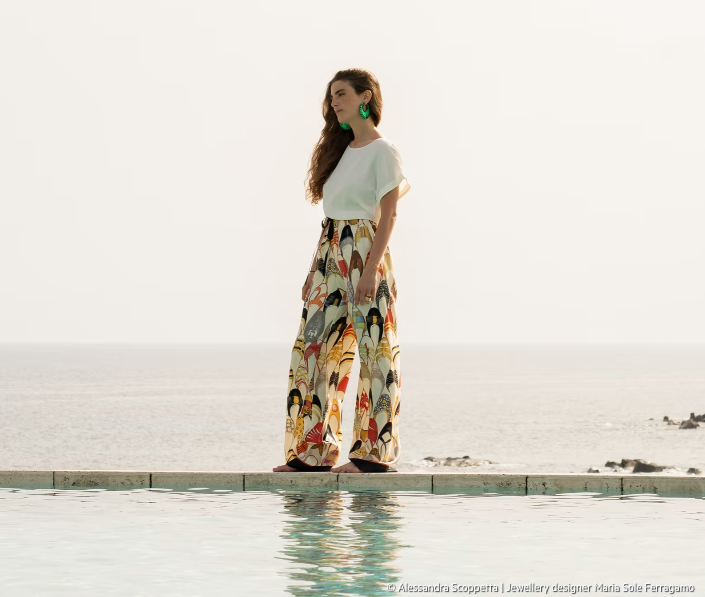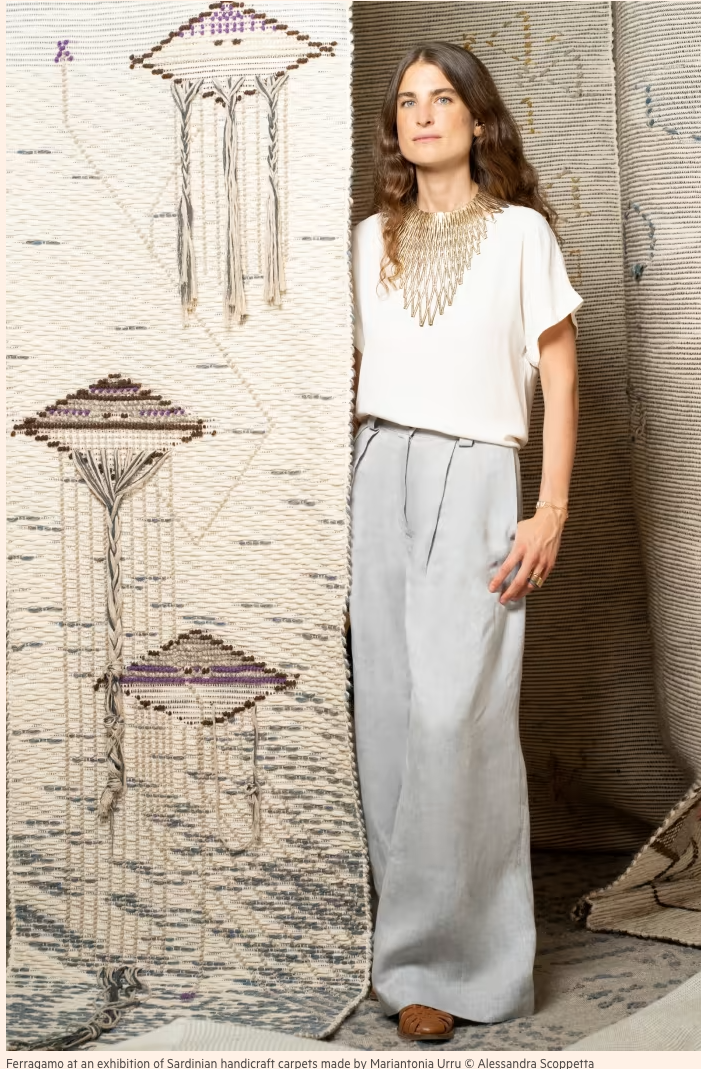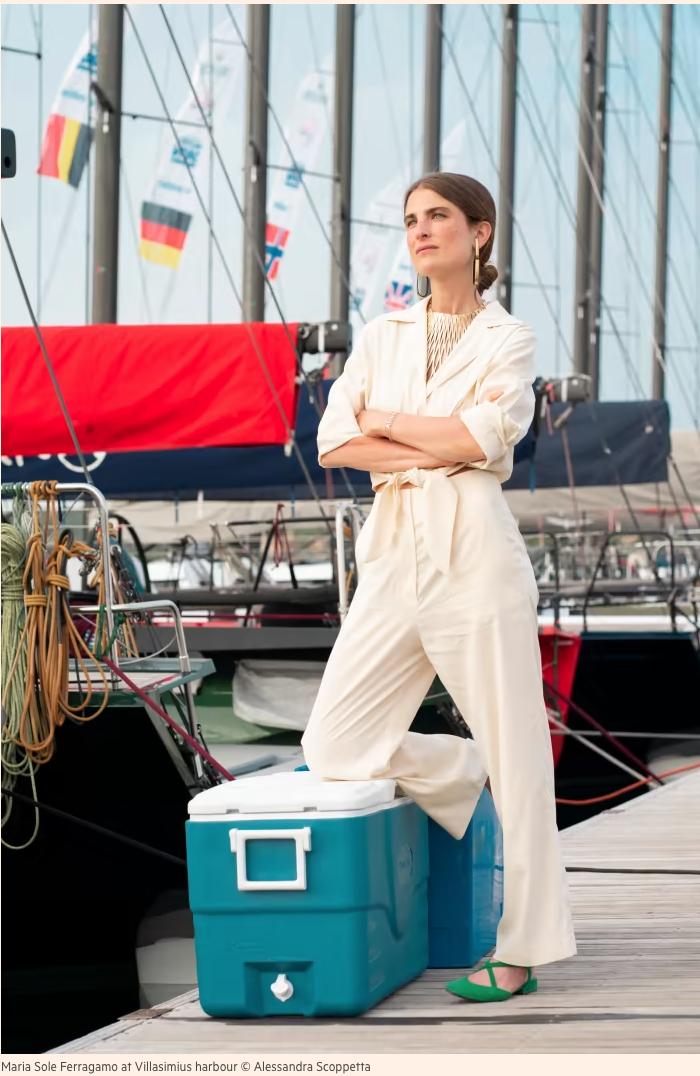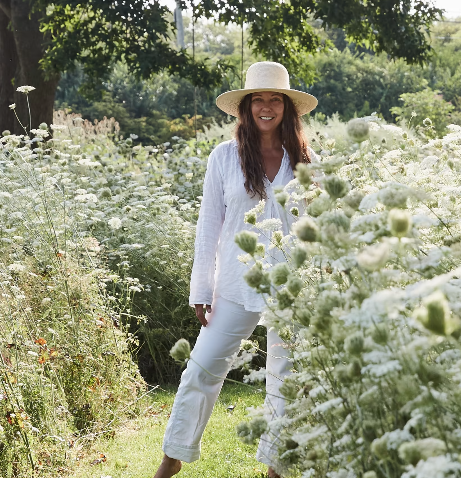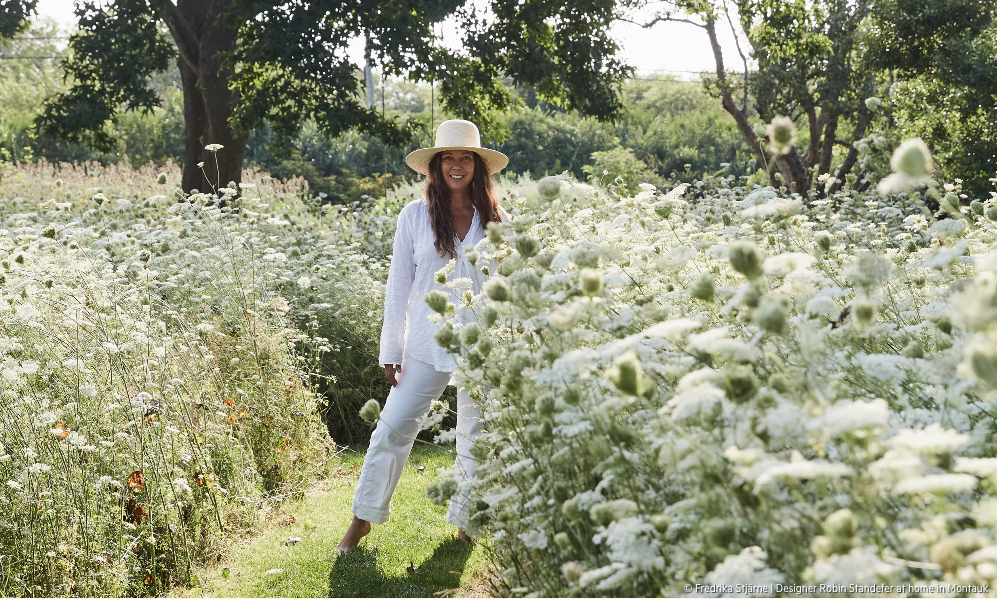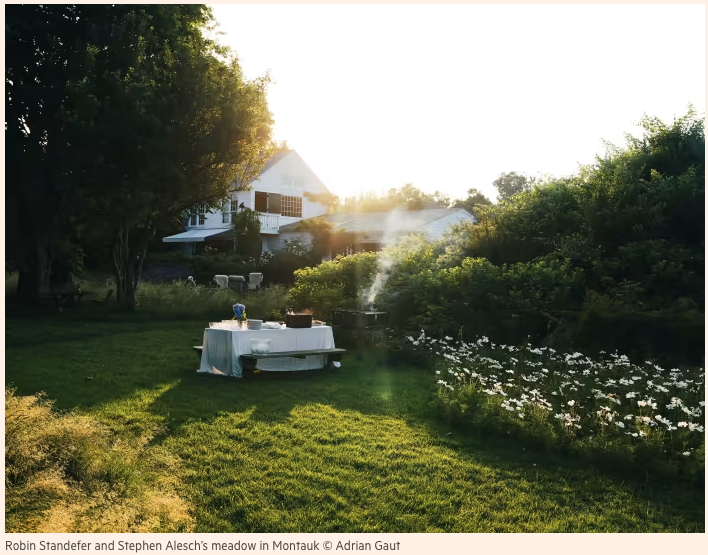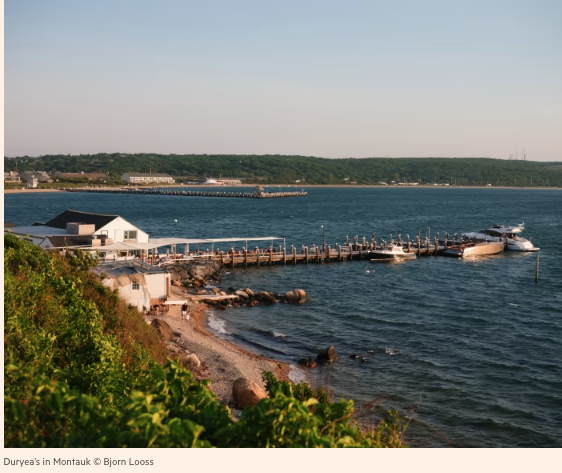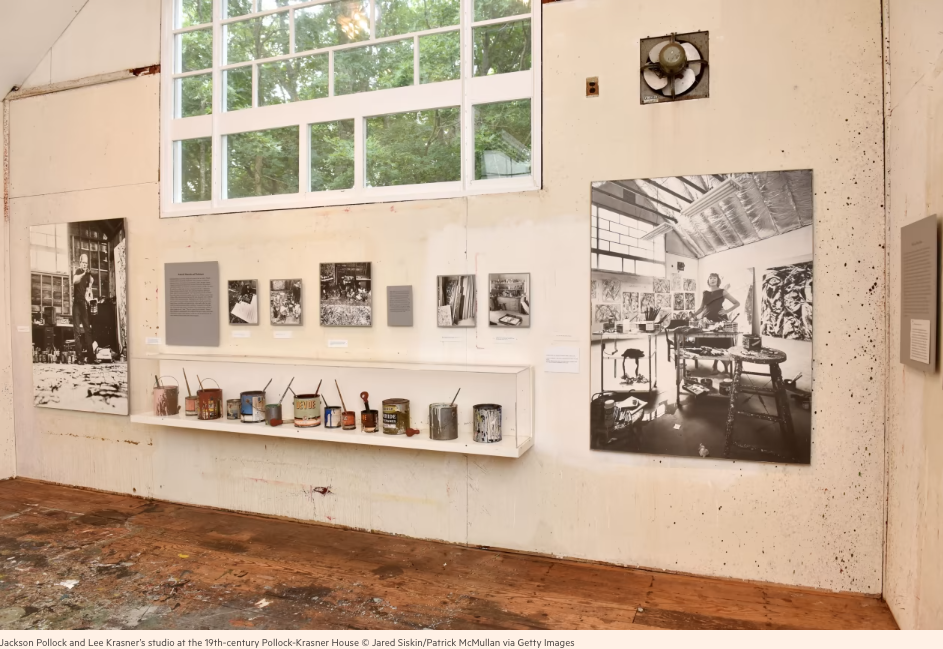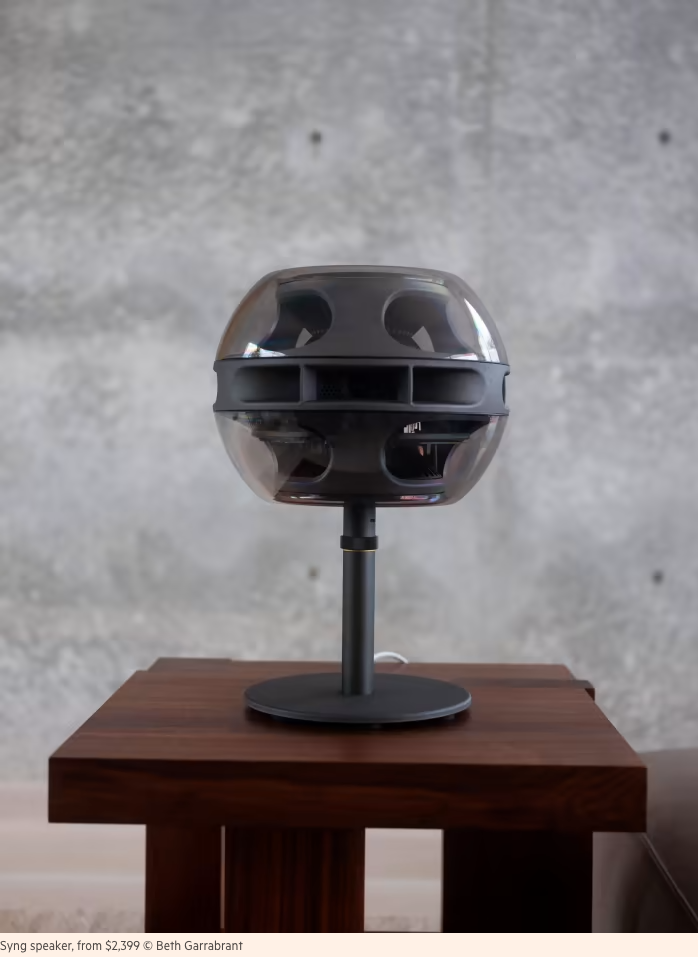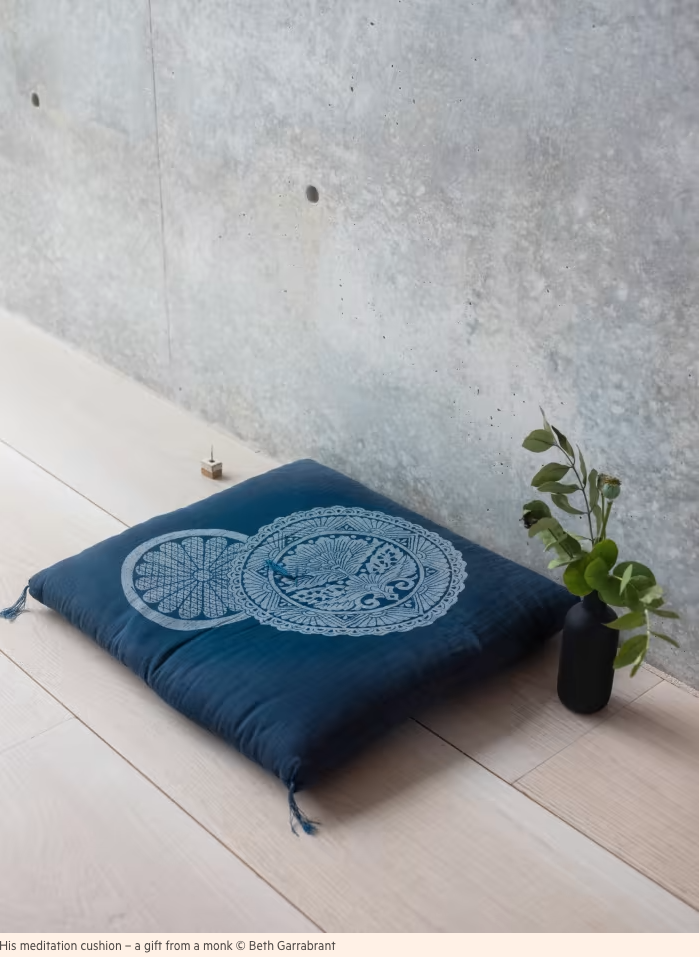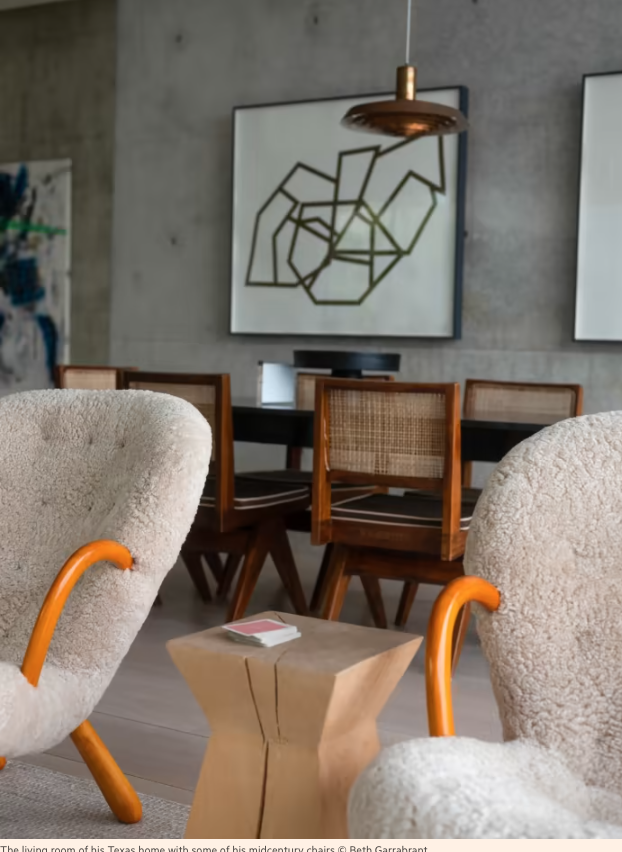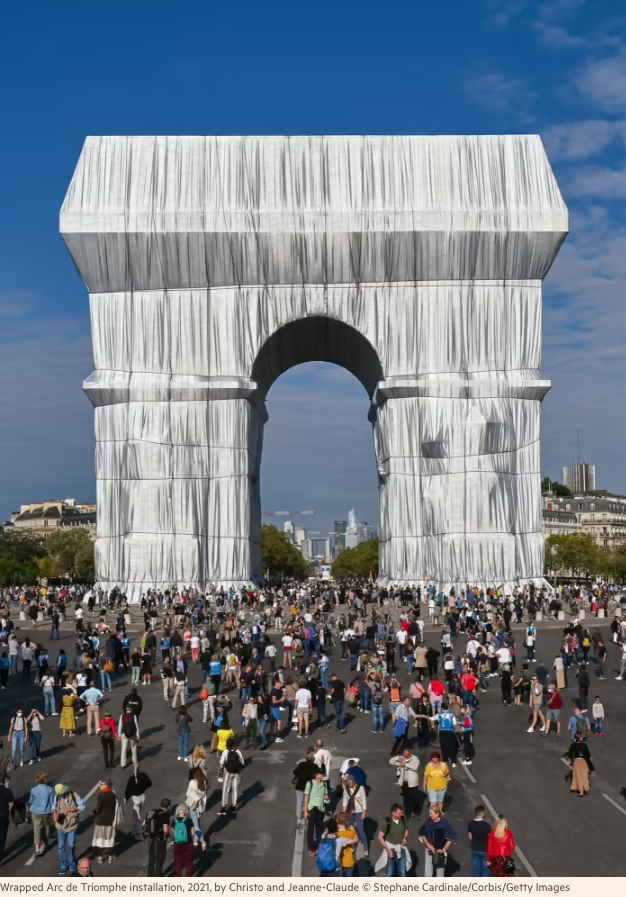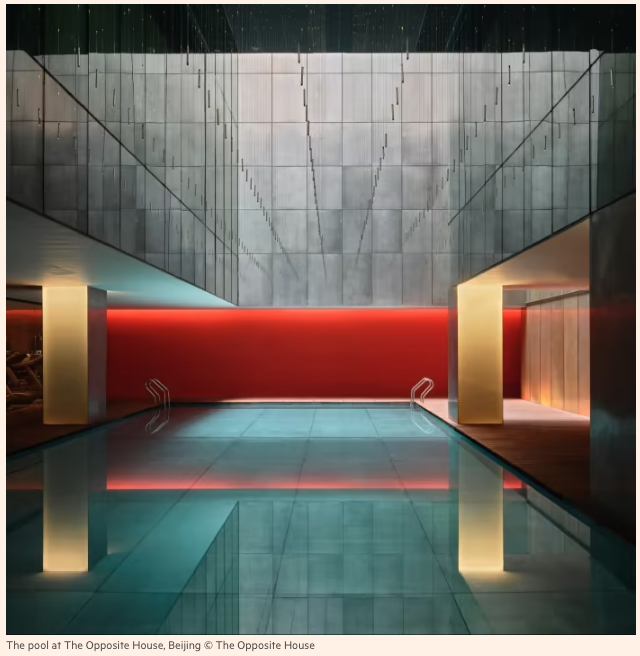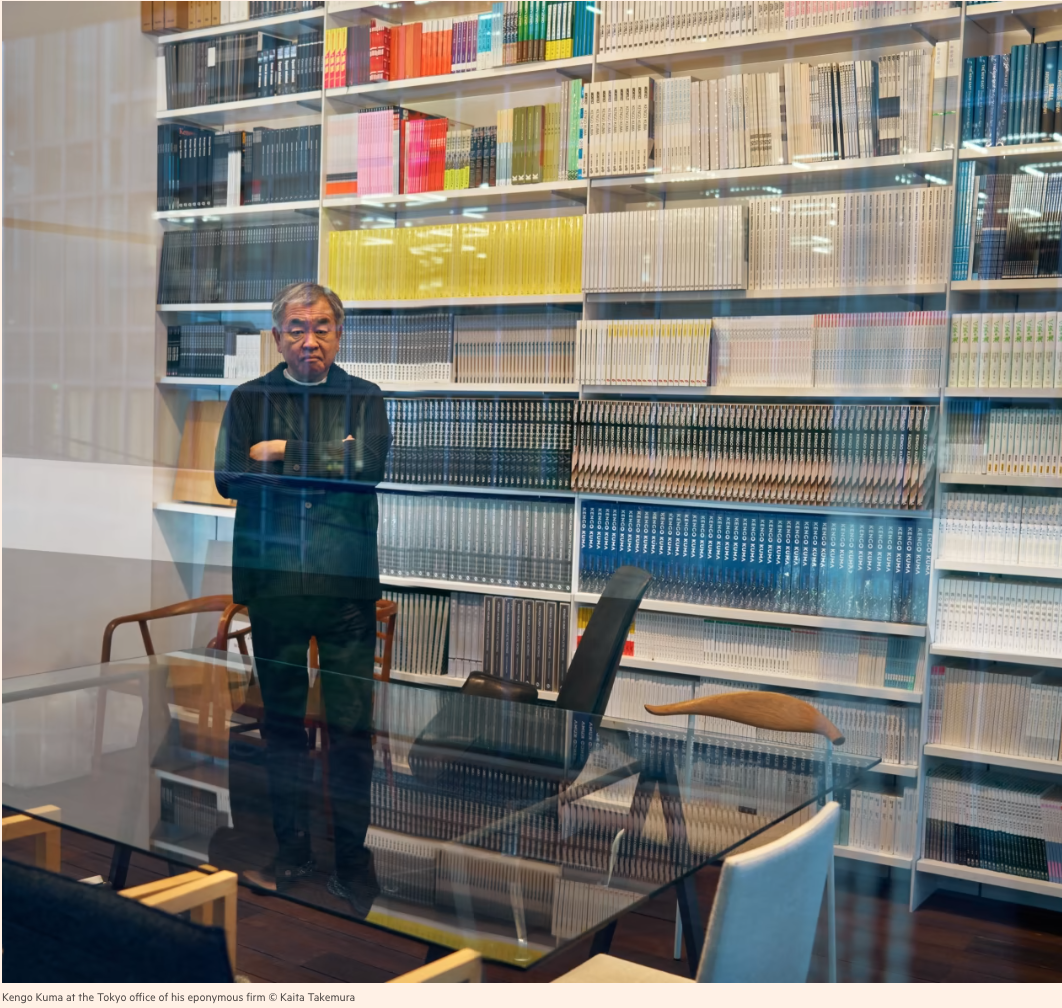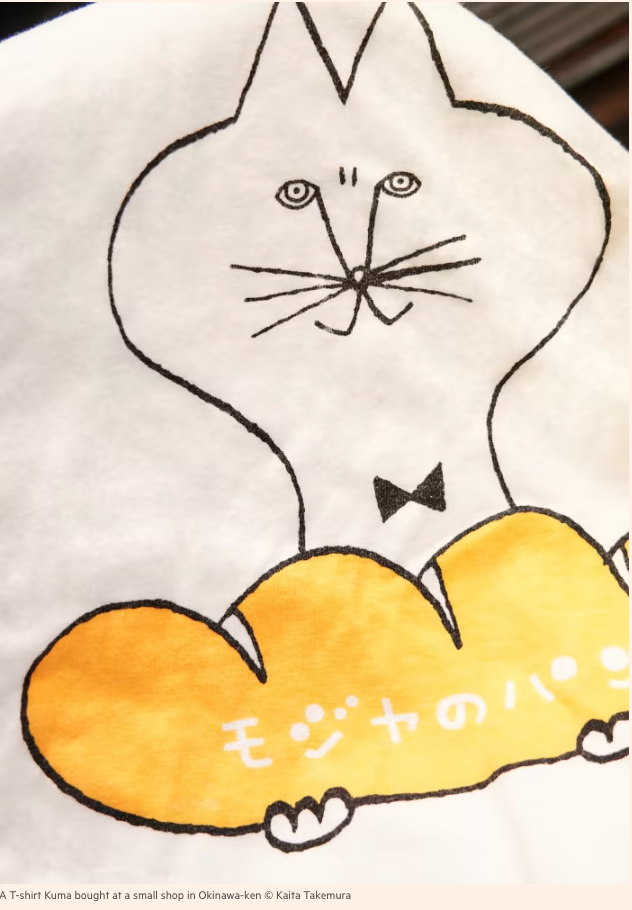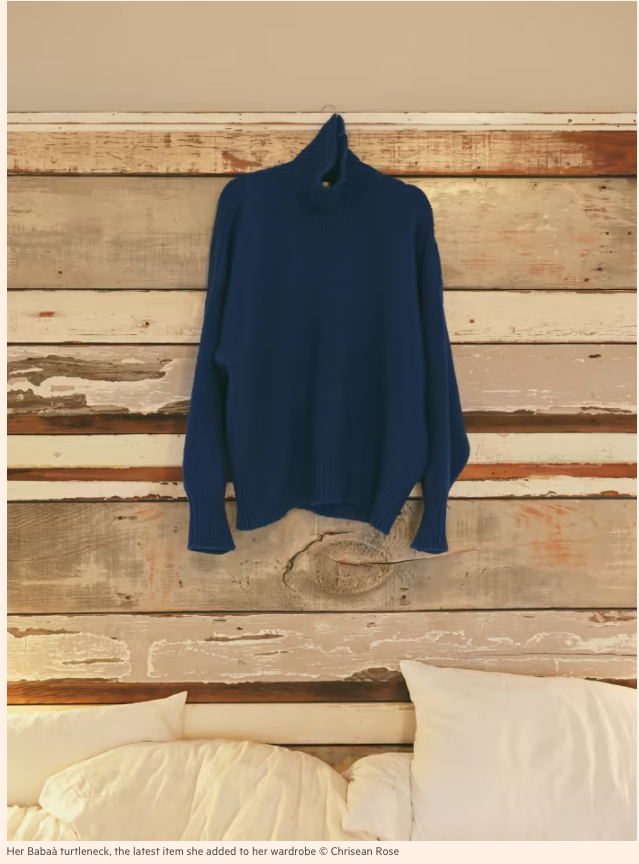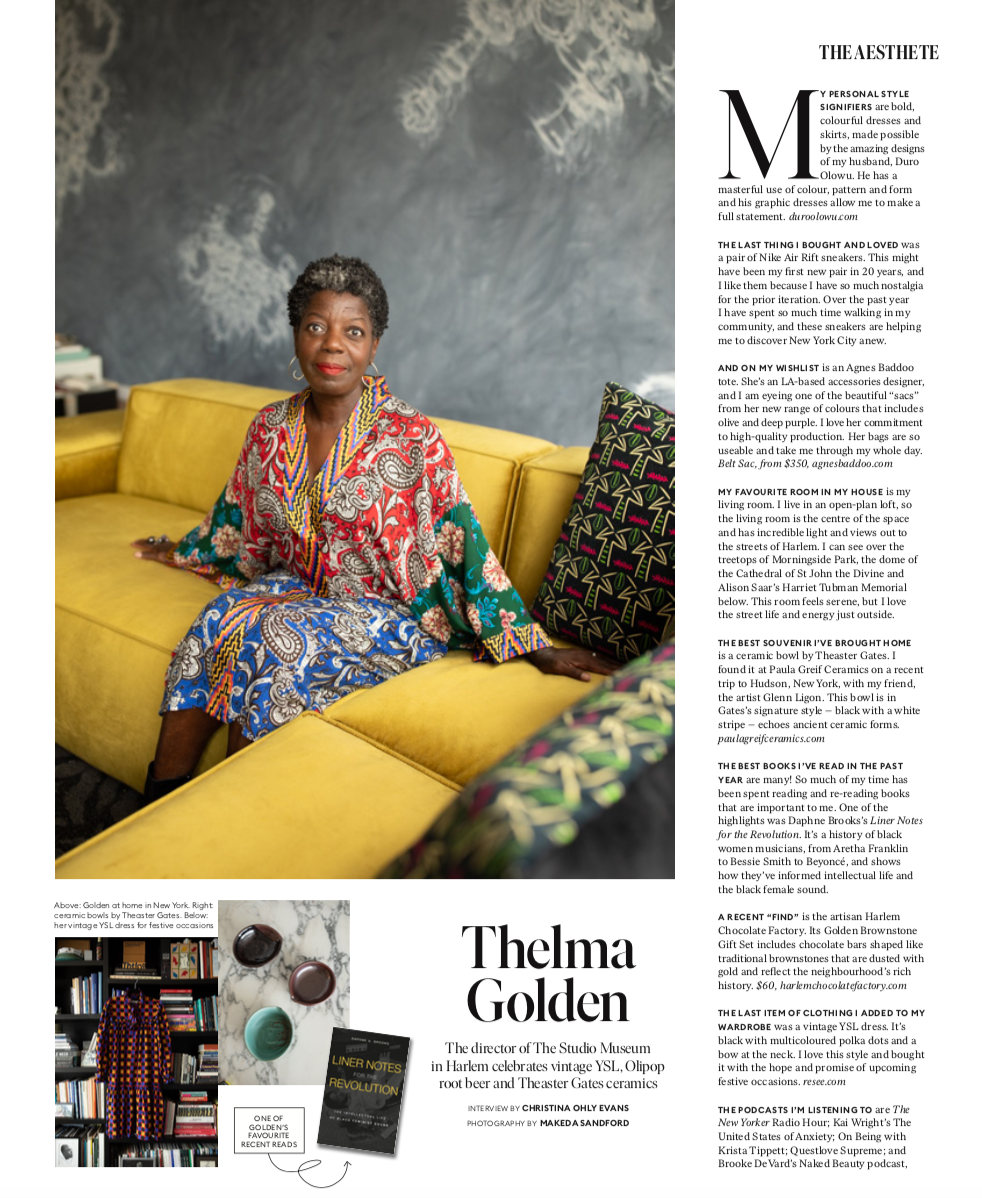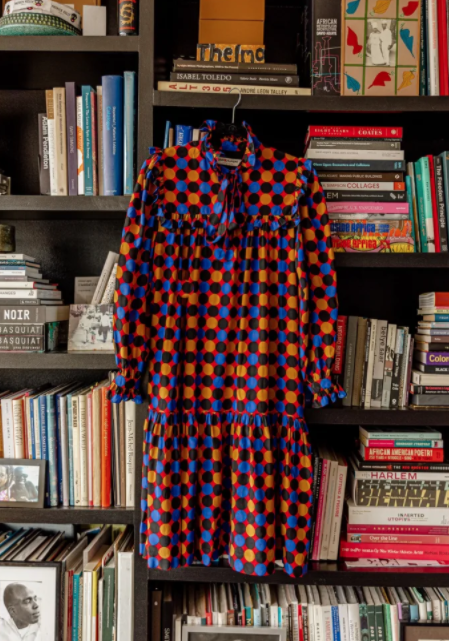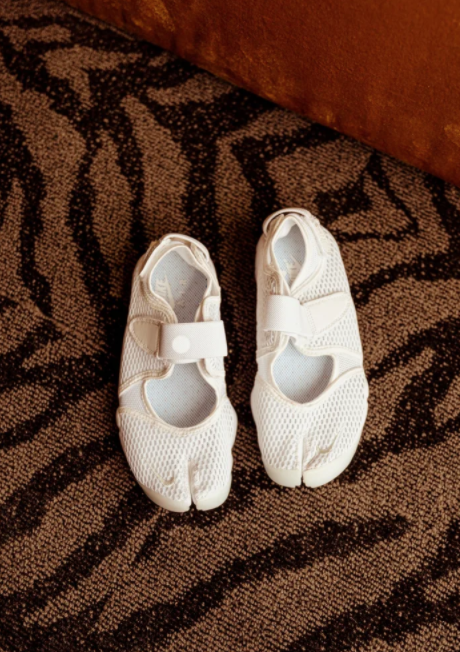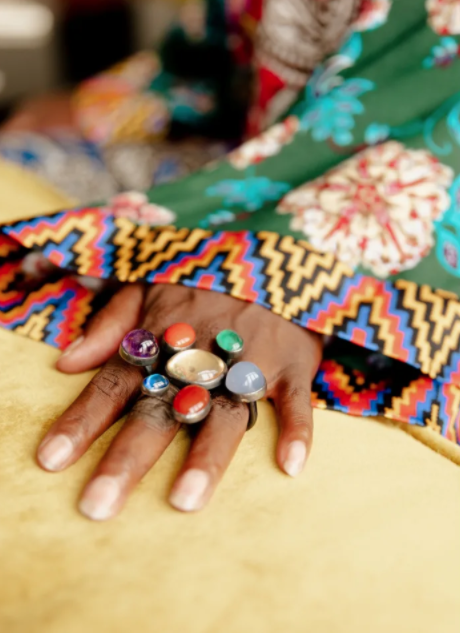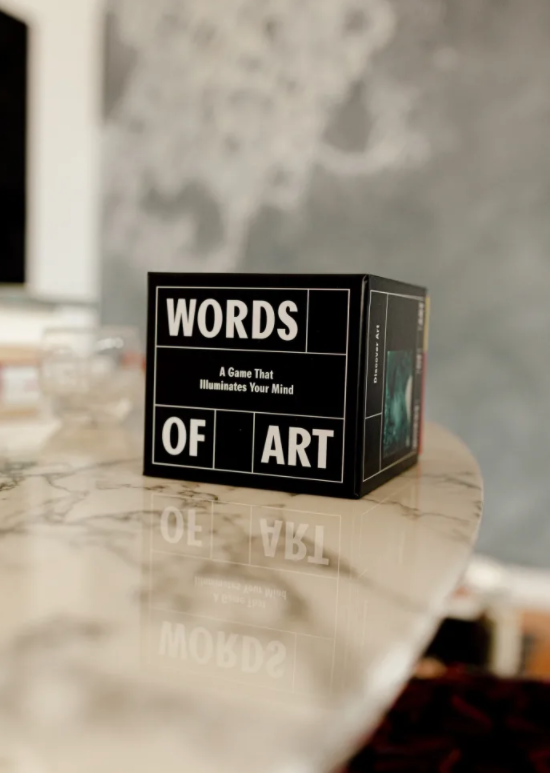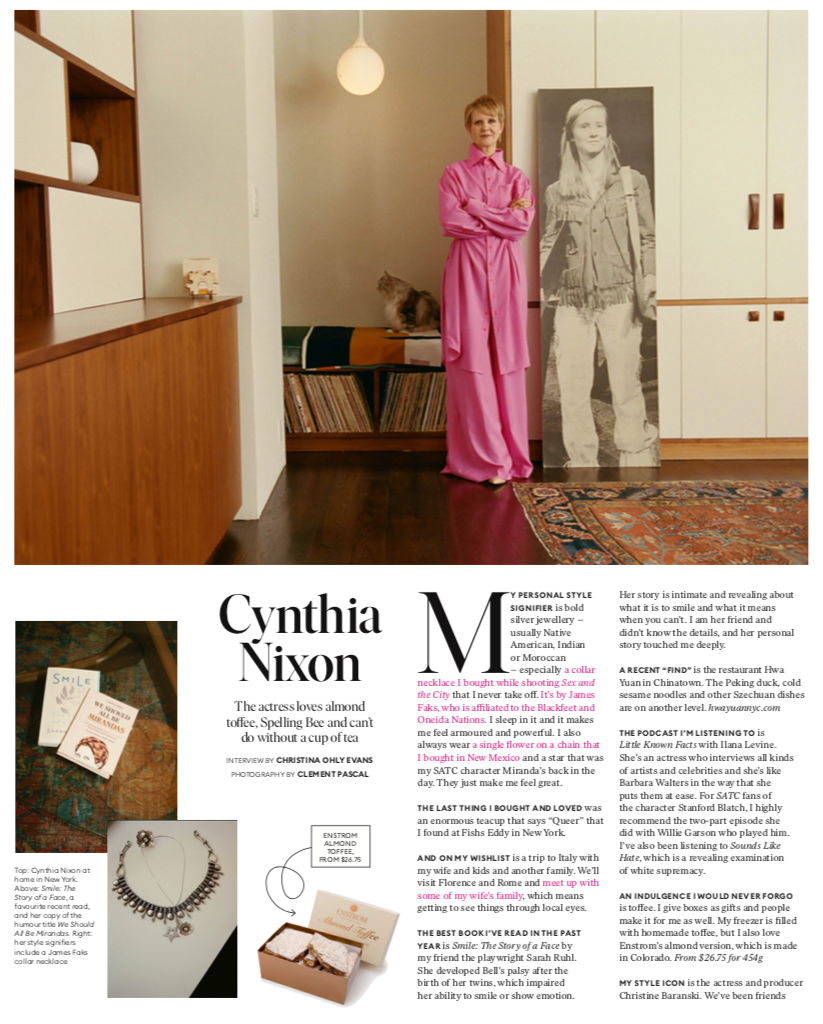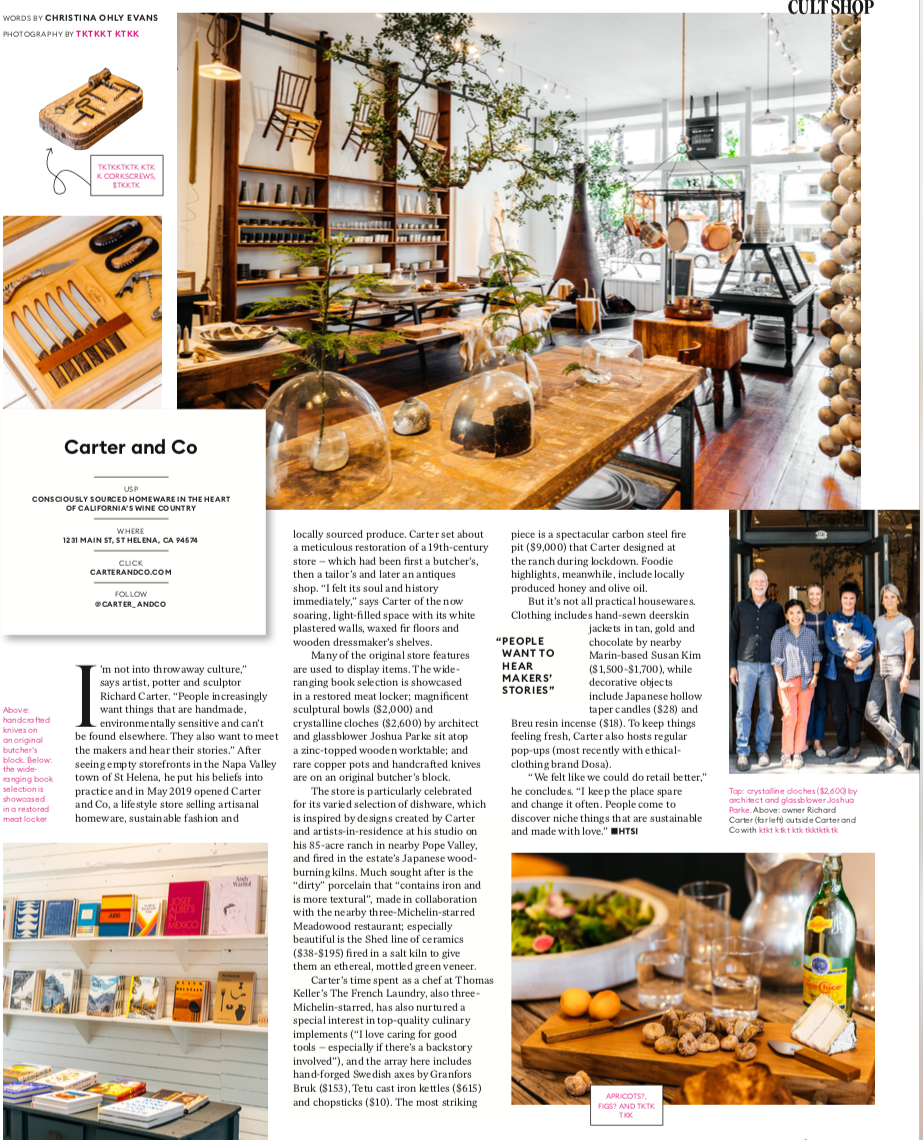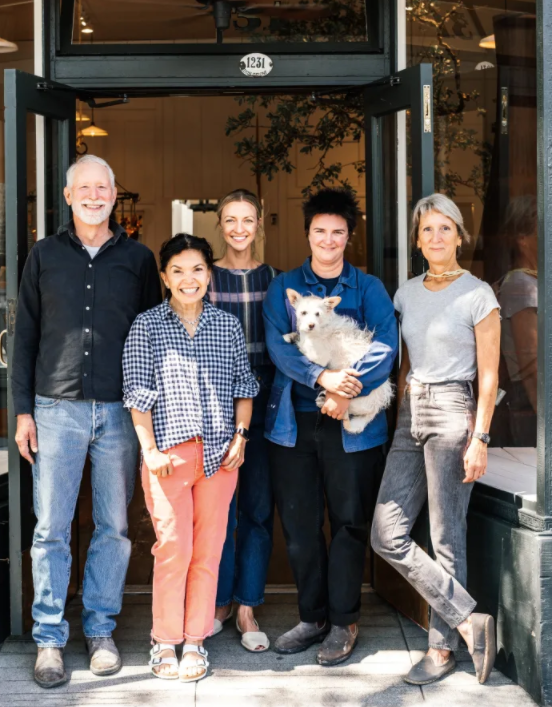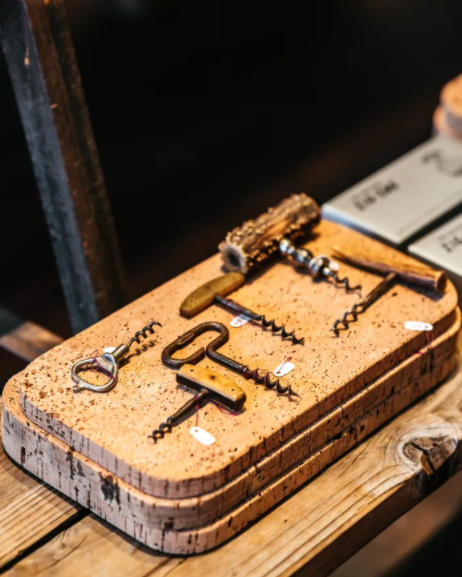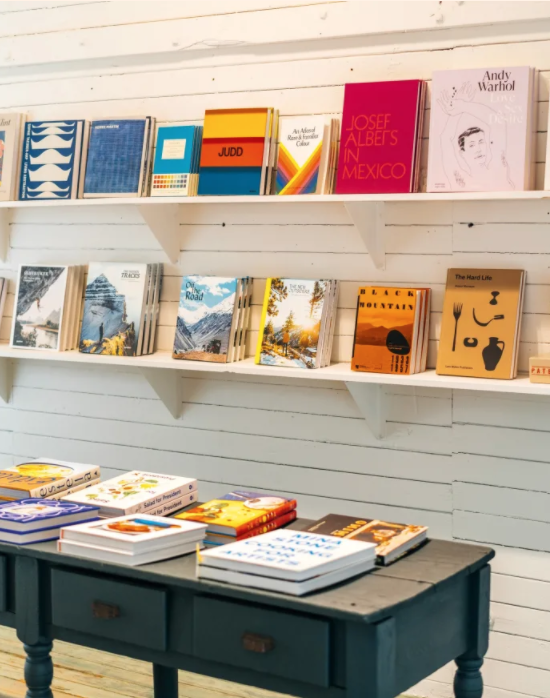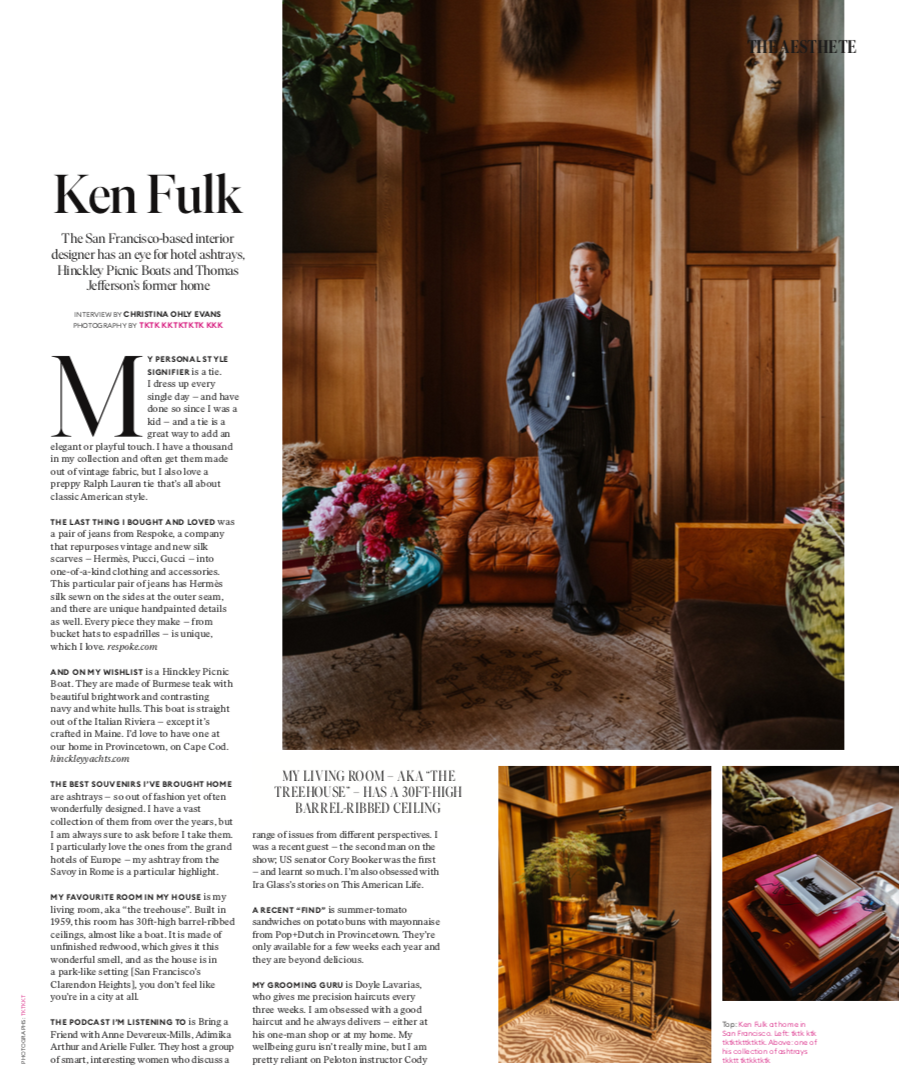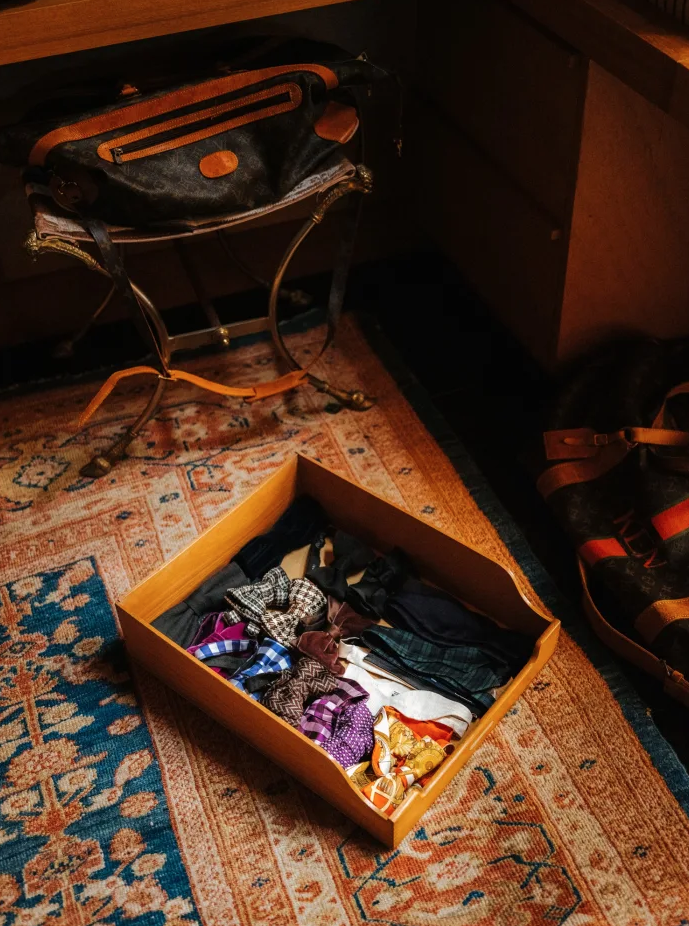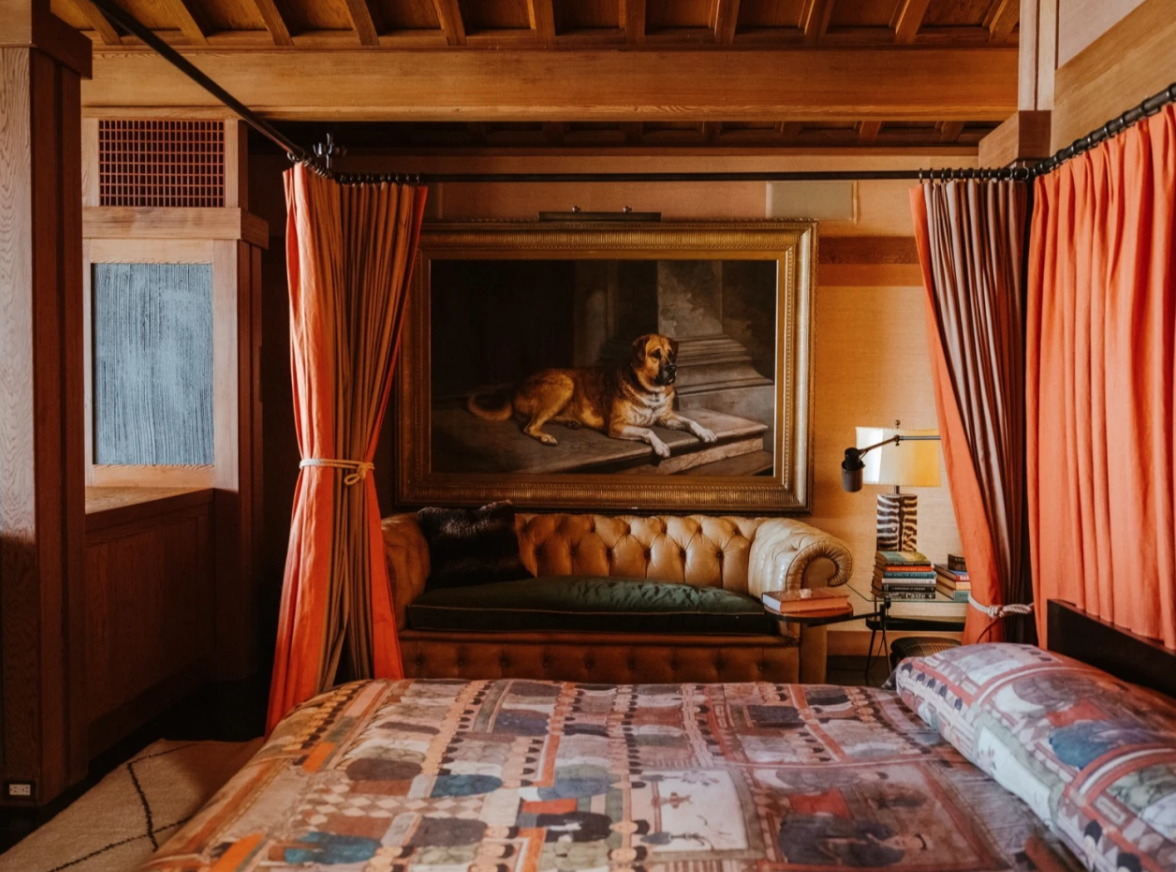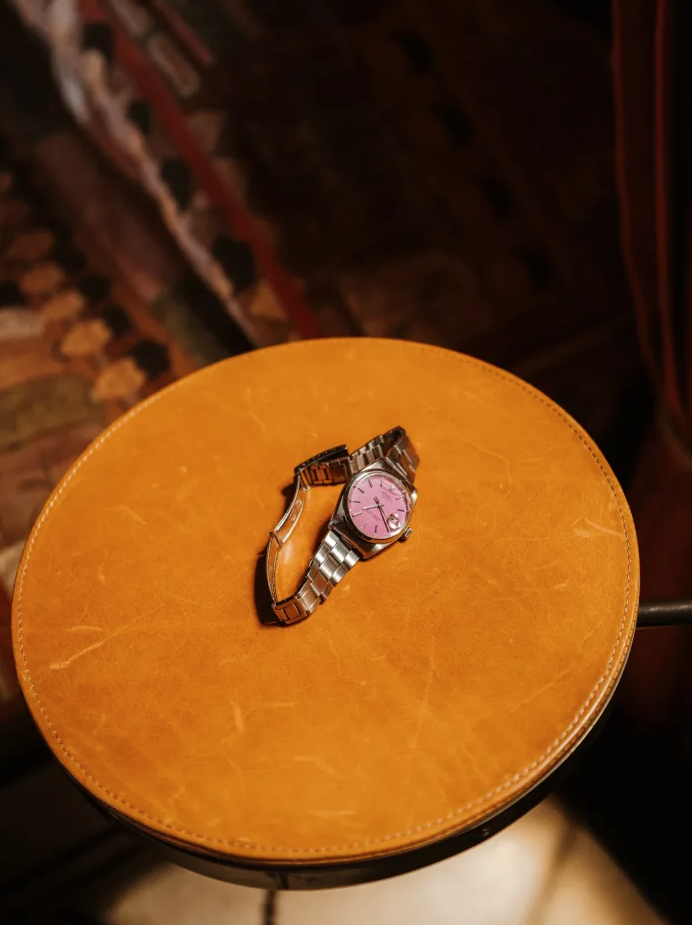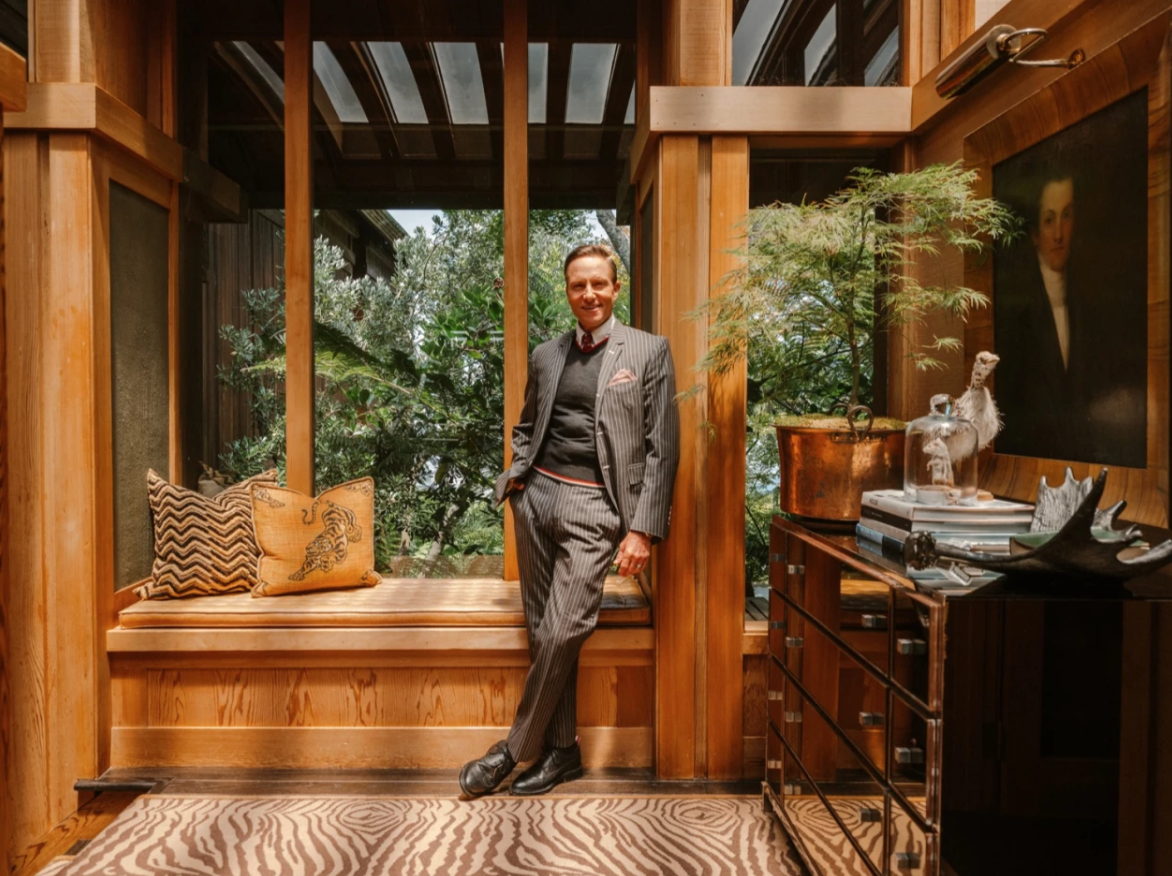Maria Sole Ferragamo’s secret guide to Sardinia
Maria Sole Ferragamo’s secret guide to Sardinia
The jewellery designer recommends her favourite places to eat, shop and stay
The jewellery designer recommends her favourite places to eat, shop and stay
I’ve been going to Sardinia every summer since I was nine months old to visit my maternal grandparents in Cannigione in the northern part of the island. When I was about 10, my father decided to buy a shipyard, Nautor’s Swan, which has held regattas here ever since. Now I live in Milan and find Sardinia to be the perfect weekend getaway.
I have sailed all around the island – it’s a wonderful way to see the beaches and remote villages. I’ve also explored the hinterlands by motorbike, once travelling 270km down the east coast – and then back up the west coast. At one point, I was surprised to find myself in a mountain chalet in an area called Gennargentu, which has the highest peaks on the island. It’s what makes Sardinia so special. You can find mountains, forests, beaches and lakes that are unique to this place. I especially love the cork trees. They are sustainable because the cork is shaved and then grows back; it’s a material I’m fascinated by. My grandfather used cork for his original wedge shoes and I’d like to incorporate it into my jewellery designs.
Costa Smeralda is probably the most well-known part of Sardinia – I’m particularly familiar with Porto Cervo. There are, of course, beautiful beaches, restaurants and clubs here, but there are also quiet spots with spectacular sunsets. In September, Sardinia’s rocks appear even more pink and orange than usual. The harbour itself has been updated and now includes the New Port as well as the original Old Port, with a ferry running between the two in summer. The new side – the Promenade du Port – is the place to find wonderful shops including one of Franco and Giacomo Loro Piana’s Sease stores, for sailing gear, and Milan gallerist Rossana Orlandi’s Sardinia space. On the old side you’ll find the Yacht Club as well as a store run by Italian sailing brand Slam. For fruit and cheese the best market is probably the Thursday one in San Pantaleo, about 20 minutes away.
From Porto San Paolo you can see the majestic Tavolara Island, which is only accessible by boat. There’s a wonderful restaurant called Ristorante da Tonino Re di Tavolara that you have to book well in advance, and which serves unbelievably fresh crudo. Another lovely port is Porto Rafael, a small village just 30km away from Porto Cervo, and also easily accessed by boat. The busy piazza is full of cafés and it’s the perfect place for an aperitivo.
The south of the island is my favourite area. I like to stay at Faro Capo-Spartivento, in Chia, originally built as a lighthouse in the 1850s. It’s respectful of the landscape, and its water is heated by solar panels. There are a few suites in the lighthouse as well as on the surrounding property, and it feels very intimate. Then there’s the village of Villasimius, just an hour from Cagliari, known for its beaches and archaeological treasures. I always recommend a stay at the Falkensteiner Resort Capo Boi, set on a white-sand beach in the marine reserve of Capo Carbonara. La Vela restaurant with its views over the marina at sunset is a favourite of mine.
The terrace at Capo Spartivento
Sardinian cuisine is full of variety. In the town of Carloforte, on San Pietro island, they are famous for their tuna and the freshest bottarga. Everyone should try a Sardinian seada, a hot pastry made with cheese and honey. And I highly recommend trying the food at an agriturismo – these places have fixed menus and you start with cheeses, meats and pane carasau – a thin, crispy flatbread that’s specific to Sardinia – followed by Gallura soup (a sort of bread lasagne). You will roll out the door, but it is worth going at least once.
April is a wonderful time to visit, as is November. And although peak season is of course hectic, even in busy August, you can still find places that are tranquil. The Rolex Swan Cup usually takes place every two years, and is happening again this September. It is magnificent to see 100 Nautor’s Swan sailboats all in one place, racing around the Costa Smeralda. At this time of year, the crowds thin and the days are a bit shorter, and Sardinia’s rocks appear even more pink and orange than usual.
Designer Robin Standefer’s insider guide to Montauk
Designer Robin Standefer’s insider guide to Montauk
The co-founder of design studio Roman and Williams on why it’s worth travelling to the tip of Long Island
The co-founder of design studio Roman and Williams on why it’s worth travelling to the tip of Long Island
Montauk has always been a place for artists and thinkers: Edward Albee, Stanford White, Andy Warhol and Mick Jagger all spent time here, each drawn to the dramatic landscape of “The End”, as the eastern tip of Long Island is known. I first came here as a teen, and when my husband and business partner Stephen [Alesch] and I needed a retreat from the city, it seemed like the perfect place. We have now called the area home for over 20 years and we love everything about it: the ocean, the farms, the fishing boats and the history. This is our spiritual home – the place that centres us – and it’s where we’ve developed ideas for everything from the British Galleries at The Met to homes for Gwyneth Paltrow and hotels for André Balazs. It’s also the place that has inspired our lighting and furniture lines and even our menus at the restaurant at our New York store RW Guild, because the produce and seafood here are so phenomenal.
Montauk offers two entirely different experiences just a few miles apart. There is the calm Long Island Sound on one side, where Sunset Beach and Gin Beach offer gentle swimming and walks, and the noisy Atlantic Ocean on the other, with its dramatic cliffs and surf breaks. People love to talk about the traffic getting to the Hamptons and beyond, so at peak times the train is a great option, as is the Hampton Jitney [a motorcoach company]. I love watching the landscape fade from dense to wild as you leave Amagansett behind and enter Montauk. There are no manicured lawns out
There are plenty of places to stay, from the hip and sexy Crow’s Nest by Sean McPherson of The Bowery Hotel, to the minimalist Marram hotel, which sits right on the beach and has yoga and biking. And Gurney’s is an old school institution that has the excellent Seawater Spa, and feels like a total escape. I like to get a morning coffee at Left Hand. For fish, Gosman’s Gourmet Fish Market is my go-to, and I’ll get up at 6am to buy tuna that’s just come off the boat. There’s also the seafood market Multi Aquaculture Systems, aka the Fish Farm. The place is scattered with buoys and nets and you can pick up incredible takeaway – they’ve got it all, especially local colour.
There is much less of a party scene out here than in the Hamptons. Duryea’s Lobster Deck – a seafood restaurant on the dock overlooking Fort Pond Bay – has a south of France vibe, and is perfect for a glass of rosé at sunset. Alimentari Beach on Montauk Highway has great coffee and pizzas that you can eat outside in the little plaza. To live like a local you need to surf and, if you’re lucky, you’ll get to surf with the harbour seals. Stop at Air + Speed Surf Shop to rent a board – they give lessons, too – or just to buy a cool T-shirt.
There are also great bike tracks and walks around the coast – much of it is state parks, like Shadmoor Park – as well as ferry rides to Block Island for whale watching. For the best views of the coast, visit the Montauk Point Lighthouse – the oldest in New York state. The 19th-century Pollock-Krasner House – once the home and studio of artists Jackson Pollock and Lee Krasner – is wonderful, too. The farmhouse is just as they left it in 1984, right down to the drips from Pollock’s paintings on the floors. A bit further on, in Water Mill, is the Parrish Art Museum. It was designed by Herzog and de Meuron and you can see works by artists such as Sol Lewitt and April Gornik, who have ties to the area.
The summer is high season, of course, and while places like Ditch Plains can be crowded, you can be blissfully alone and left just to collect rocks in spots like Camp Hero State Park – even in August. Autumn is spectacular. You can still surf and hike, the air is crisp and cool, and there is fantastic apple-picking. We always host a harvest dinner in late October. Winter feels very Scandinavian – there is lots of fog, and sometimes it snows. Our Reed candlesticks were inspired by the dried stems you see in Montauk in this bleak but beautiful season. Montauk is so environmentally protected that I don’t worry too much about it all changing, or the wild beauty of the gardens or the shape of the coastline deteriorating. I do, however, want it to remain a place for explorers, and I also want to see it stay balanced, because that’s what makes Montauk so cool.
Spanish SPLENDOR
Spanish SPLENDOR
This summer is a great time to viva España
By Christina Ohly Evans
From the bustling plazas and trendy tapas bars of Madrid, to the bustling port city of Barcelona, to the architectural gem that is Seville, Spain is really having a moment. The combination of medieval towns, beautiful beaches, a vibrant art scene and endlessly creative cuisine make this country an appealing destination.
MAS MADRID SANTO MAURO, A LUXURY COLLECTION HOTEL
Set in the stylish residential area of Chamberí, Santo Mauro offers an opulent step back in time—to an 18th century mansion with a mix of period styles and global influences. Interiors have been overseen by noted designer Lorenzo Castillo whose preference for rich fabrics and elegant antiques makes the 49 palatial rooms and suites—as well as libraries and a bijoux bar—feel like a welcoming home away from home. Three historic buildings—one a horse sta- ble that has been turned into light-filled rooms—are surrounded by lush gardens and make Santo Mauro a truly unique find. In public spaces guests are surrounded by plush furnishings in rich green and gold velvet, Chinoiserie wall coverings, as well as touches of the black lacquer and Qing Dynasty portraiture favored by the property’s past owners. The hotel’s El Jardin is the ideal spot for casual dining al fresco, while epicures will love the tasting menus at La Biblioteca Gresca. Be sure to enjoy an after dinner drink at El Bar where the clubby setting and convivial bartender make for a perfect end to any day. marriott.com
MADRID EDTION
The winning combination of hotelier Ian Schrager and British architect, John Pawson, is in dazzling effect once again at this 200-room, 23-suite property that’s set on the historic Plaza de la Descalzas. A mix of the sleek lines, muted lighting and natural finishes that Pawson is known for contrast with an 18th-century Baroque portal that’s been restored by Spanish architect Pedro di Ribera, to create a daz- zling, yet authentic destination. Decorative touches range from bespoke sofas with dramatically back-lit shelves to Jean- Michel Frank armchairs to recycled bronze stools from Maison Intègre, as well a sculptural pool table by Emmanuel Levet Stenne sculpted from a single slab of white Bianco Neve marble.
One of the hotel’s main draws is Jerónimo, a Mexican-influenced restaurant by noted chef Enrique Olivera of Mexico City’s Pujol and Cosme in New York. Using the strong cultural ties between Spain and Mexico as well as local ingredients, guests can dine in a double-height, vibrant dining room or outside on the hotel’s verdant pri- vate terrace. The second gourmet offering is Oroya, helmed by Peruvian chef Diego Muñoz and where Pisco Sours and ceviches are the orders of the day. And last, but cer- tainly not least on a hot summer day, is the hotel’s sprawling rooftop pool—Madrid’s largest—surrounded by chic cabanas with views of the red-roofed city skyline beyond. editionhotels.com
MANDARIN ORIENTAL RITZ
The grand dame of Madrid, the Mandarin Oriental Ritz has just undergone the most extensive renovation in its 110 year history courtesy of architect Rafael de La-Hoz with interiors by French firm, Gilles & Boissier. The result is a timeless Belle Epoque gem that is in keeping with hotelier Cesar Ritz’s original aesthetic, all while incorporating modern leather, brushed brass and marble touches throughout. Centrally located within the Golden Triangle of Art—home to the Prado, Thyssen-Bornemisza and the Reina Sofia Museum of Modern Art— the Mandarin Oriental Ritz remains a bustling hub with its five restaurants and bars draw- ing a discerning international clientele throughout the day.
Under the guidance of multi-Michelin- starred chef, Quique Dacosta, Deessa offers fine dining with an avant-garde twist, while the Champagne Bar and Pictura Bar are the places for serious cocktails, live music and a buzzy vibe. The highlight, however, is the iconic El Jardin del Ritz—a chic oasis in the middle of the capital, complete with the perfect gin tonic (no “and”). After the vibrancy of the hotel’s public spaces, the 100 sumptuously- appointed guest rooms and 53 suites offer a bit of serenity with the terraced Turret Suites and the sprawling Presidential Suite with its hand-painted mural among the standouts. mandarinoriental.com
AND IN ANDALUSIA...
LA ZAMBRA, COSTA DEL SOL Originally opened in 1984 as the uber-chic luxurious Byblos, the Málaga hotel has counted The Rolling Stones and Diana, Princess of Wales among its glittery guests. After a refresh by father-son architectural duo Esteva i Esteva of Menorca’s Torralbenc fame, La Zambra opens this summer and promises a contemporary take on relaxed Andalusian style. The property’s 197 light-filled rooms and suites are swathed in neutral hues, while furniture hewn from light wood and stone add to the soothing ambience. Multiple swimming pools, a state of the art spa, a Turkish bath, sauna and a hammam are just a few of the luxurious amenities on offer, while golfers can take advantage of neighboring world class courses. Food and drink take center stage with an emphasis on Andulusian sea food and light, healthy cuisine by day and shifting to a more indulgent approach at sundown when the spit roast becomes the focal point. With its white-washed buildings, coastal setting, and killer sangria, La Zambra promises to bring back 1980s Mediterranean glamour. lazambrahotel.com
FLAVORFUL FINDS True gourmands and the casually hungry alike will find something to savor in Spain this summer
TASTING NOTES WITH DWANI LOPEZ
Serious foodies take note: Black Tomato, the U.K.-based travel insiders, specializes in planning trips focused around excellent, hard-to-find Spanish cuisine. Far beyond your standard sangria and tapas (though they’ll find you the best), you’ll be in the hands of three of Spain’s best chefs—Dani Lopez, Aitor Arregui, and Elena Arzak— who hold five Michelin stars between them—who have co-curated an itinerary that includes a private pintxos tour in Bilbao, a Michelin-starred meal at the impossible-to-book Azurmendi, followed by winery tours in Rioja. Demonstrations, access to private culinary clubs, and more Michelin stars await at Arzak in San Sebastian followed by cooking classes in Cantabria, all capped off by a seat at the Chef’s Table at Aito Arregui’s Elkano for delectable Basque bites. blacktomato.com
EL SILENCIO
Ibiza is heating up this summer with the residency of three Michelin star chef, Mauro Colagreco, at the iconic El Silencio, overlooking Cala Moli and the Balearic sea. Partnering with friend and fellow Argentine flame master, Federico Desseno, the pair will specialize in Mediterranean cuisine—just-caught seafood including shrimp aguachile finished with coriander and chile, Peruvian ceviche with fresh peach and lime and asado-inspired steak onions finished with chimichurri and rus- tic salad. Wood-fired pizzas that are per- fect for sharing over long, lazy lunches are paired with cocktails by French-Irish mix- ologist, Remy Savage, and a day spent here promises to be a gourmet (as well as people watching) delight. elsilencioibiza.com
JACQUELINE
The ultimate epicurean city, Barcelona, is about to get even better with the opening of Jacqueline—so named for Pablo Picasso’s second wife and muse, Jacqueline Roque. The three-story restaurant has been designed by Rockwell Group and is inspired by its namesakes’ colorful life—as well as her portraits including “Woman in a Turkish costume seated in a chair” and “Jacqueline with Flowers”. A grand vesti- bule swathed in blue velvet welcomes guests into the chic entry bar followed by a grand dining room complete with stunning metal palm trees which were the artist’s favorite. Upstairs features a bijoux cocktail bar while the lower level is home to a club that’s clad entirely in rich red. For Catalan cuisine complete with live music, join the waiting list now. jacquelinebarcelona.com ■
Summer ITALIAN STYLE
Summer ITALIAN STYLE
La dolce vita never gets old and this season promises to be one of the very best. Visit new hotspots in Capri, Verona and beyond.
La dolce vita never gets old and this season promises to be one of the very best
By Christina Ohly Evans
After several years of travel disruptions, no place is more in demand this summer than the chic cities and dramatic coastlines of Italy. Adding to the general excitement are the opening of new properties from the shores of Lake Como to the cliffs of Capri—all luxurious hotels, restaurants and villas with a rich sense of history and the latest in luxury amenities—and each with its own particular brand of warm, Italian hospitality.
Passalacqua, Lake Como
Perhaps the most anticipated opening of summer (or the year, for that matter) is Passalacqua, a historic private villa that has been lovingly transformed into a 24-suite hotel on the edge of Lake Como, just above the picturesque village of Moltrasio. Once home to composer Vincenzo Bellini, and host to literary and political figures including Winston Churchill, Passalacqua is the passion project of Paolo, Antonella and stylish CEO Valentina DeSantis—a family with multigenerational ties to the lake whose sister property, the iconic Grand Hotel Tremezzo, has set the standard for understated elegance for decades.
With majestic terraced gardens dotted with centuries-old trees and fountains, the villa is an ideal destination for those seeking a quick, quiet respite from the bustling world beyond. Other painstakingly perfect details include a lush rose garden, a vegetable garden that supplies the hotel’s creative kitchens, an open-air gym and exquisitely restored glass houses—complete with flowering fruit trees. But it is the 24 suites—set within the original villa, the original stables and Casa del Lago—that are truly stunning. From a double-height suite where Bellini once played to the sumptuous marble-clad bathrooms (each single slab hand-chosen from the Breccia Pontificia in Verona—the same found in The Vatican) and vivid, frescoed ceilings, Passalacqua is a relaxing retreat like no other. For shimmering lake views, a game of tennis at the water’s edge or a sunset sail in one of the villa’s beautifully restored vintage boats, book in at Passalacqua and leave the world behind.
Vista Palazzo Verona
Set in a 19th century mansion in the heart of the city’s medieval Centro Storico, the five-star Vista Palazzo Verona is a special, family-owned gem offering 13 palatial suites and just 3 standard rooms that are anything but. Owned by the family-operated Lario Hotels—the group behind the stunning Vista Palazzo Lago di Como—the opulent property offers outsized amenities for such a bijoux hideaway: an indoor swimming pool—the only such hotel facility in Verona—as well as a spa, library, wine tasting room, and athletic facility are all part of the program. But it is the drinks and dining spaces that really differentiate it—from the penthouse level Sottovoce restaurant and bar to a rooftop terrace with 360-degree views of medieval rooftops and the rolling hills of Lake Garda in the distance.
Il San Corrado di Noto, Val di Noto
An ancient masseria once owned by Prince Nicolaci, Il San Corrado di Noto has undergone an extensive three-year renovation that has yielded 26 exquisite suites and eight pool villas—the perfect jumping-off points for exploration of Sicily’s surrounding UNESCO World Heritage sites. Streamlined yet spacious suites feature outdoor patios, while one- and two-bedroom pool villas offer flexible configurations for families and larger parties.
The property is a mix of Baroque charm and a minimalist aesthetic that pervades two enormous pools, a spa and a fitness room that’s kitted out with state-of-the-art equipment. For those interested in the beach, the hotel’s private club is accessible by a short shuttle ride, and two signature restaurants—Casa Pasta and Principe di Belludia—offer authentic Sicilian cuisine in relaxed settings at day’s end.
Hotel La Palma, Capri
The Amalfi Coast is always a good idea, but now more than ever with the addition of Hotel La Palma, the latest property in the Oetker Collection. Originally built in 1822 as the Locanda Pagano, the hotel was a gathering spot for artists and intellectuals—many of whom left drawings and poems on the walls in lieu of payment. In keeping with that spirit, interior designer Francis Sultana has conceived a 50-room-and-suite “home from home” complete with new frescoes by Rome-based Roberto Ruspoli. A soothing palette of neutral and sage hues sets the tone for commissioned artwork by Luisa Lambri, while bespoke furnishings and wall hung tapestries by Allegra Hicks add to the island glamour. No detail has been overlooked at this reimagined treasure, with handmade rattan furniture by Bonacina and custom bronze-lined bathroom fittings by Stella. Just steps from the buzzing Piazzetta, the rooftop restaurant Bianca promises to be the summer hotspot with stunning views of Capri Village and the endless sea—and with Campari cocktails to match.
Mandarin Oriental Milan
For a stay in this magnificent city there is no place more perfectly situated—or more welcoming—than the Mandarin Oriental, located just steps from the Duomo, the Galleria and the shops of Via della Spiga. Set across four 18th-century buildings and enhanced with modern M’O touches, the hotel has been welcoming tourists and locals alike for seven years—many of whom come for the outstanding aperitivo that’s on offer at the just-launched Mandarin Garden. For a bit of glamour and an authentic Milanese meal courtesy of Michelin-starred chef Antonio Guida, this is the place to be now.
Giacomo al Lago, Lake Como
This truly unique lakeside fish restaurant is the product of a partnership between the iconic Giacomo restaurant group and the design/hospitality talents of Valentina De Santis and the Grand Hotel Tremezzo. Come for the Giacomo Milano favorites—crudo of all kinds, housemade pastas—and stay for the sublime views, cocktail in hand.
Travel Tip: Black Tomato
This is shaping up to be a tough-to-book summer, so you might want to enlist the talents of Black Tomato for exceptional access to Italian experiences ranging from a behind-the-scenes look at the Lamborghini factory in Bologna, to making honey in Taormina, to mask-making in Venice and sculpting with a noted artist in Puglia. No request is too outlandish, and a dedicated travel expert will tailor-make Italian holidays—but you’ll need to book fast.
Joe Gebbia - The Airbnb co-founder on his favourite things
The Airbnb co-founder on his favourite things
Joe Gebbia loves Space Hippies, sound baths, cereal packets and will go anywhere for Christo
Joe Gebbia loves Space Hippies, sound baths, cereal packets and will go anywhere for Christo
My personal style signifier is a pair of Nike Space Hippies – a modern marvel of sneaker design. They’re made of recycled materials – plastic bottles, T-shirts and post-industrial scraps from the factory – and I like that they’re environmentally low-impact, incredibly comfortable and distinctive. I have them in high-top and low-top versions, in grey and orange. Along with my titanium Ressence watch, they are my everyday staples.
The last thing I bought and loved was a set of Syng triphonic speakers. I love reaching the end of the day, when I can blast out some music. They are spread equidistantly through the room in order to create a sound bath – the sound quality is a revelation.
I’ve recently rediscovered my love of live sports. Since moving to Austin, I’ve become a partner in the San Antonio Spurs, and getting to go to basketball games again – sitting courtside, feeling that energy, watching people convene – has been wonderful.
The best souvenir I’ve brought home is a meditation cushion from a Buddhist monk in Oita, Japan. He’s an Airbnb host and he gave it to me when I stayed in his temple. I got to live the life of a monk on that trip – meditating at 5am, cooking meals in his kitchen, tagging along to the village where he performed rituals in people’s homes. I still use it often. My style icon is Haider Ackermann. His designs look like no one else’s, and his work is a reflection of him – informally formal.
The best gift I’ve given recently was cereal boxes, which I designed for our early investors and each member of our executive team, to commemorate our IPO. Each one had that person’s likeness on it. I made 40 or so boxes, so it was a time-intensive project. It was a homage to our Obama O’s breakfast cereal of 2008, which we sold to keep Airbnb afloat at that time. The last music I downloaded was the album Battle Lines by the Canadian electronic duo Bob Moses. It’s a mix of wistful lyrics, pop beats and synths.
The objects I would never part with are my sketchbooks. I have them custom-made in three sizes and with weighty paper so that the ink doesn’t bleed through the pages. I sketch first concepts – for example, for Neighborhood, a furniture line I did with Bernhardt – and I also draw people, so that I have a written and visual record of meetings.
I have a collection of midcentury modern chairs. Many of the pieces are by Charles and Ray Eames and also by the Dutch designer Gerrit Rietveld, who broke the mould of what furniture was supposed to look like. I have Rietveld’s Red and Blue chair, and also his Zig Zag and Crate chairs. And I have an Eames daybed-like one that they made for the director Billy Wilder, who used it for napping on movie sets.
In my fridge you’ll always find maple syrup and butter for making pancakes at the weekend. I have a wide variety of syrups – all the grades, all the light and dark versions – and like to make pancakes for whoever is staying with us. I also have Hello Pure dog food for my puppy, Belo.
The thing I couldn’t do without is my Opal webcam. It’s beautiful and of the highest quality – they have somehow packaged DSLR-level quality into a camera that fits in your pocket.
An indulgence I would never forgo is travelling to see a Christo and Jeanne-Claude installation anywhere in the world. I was recently in Paris for the Arc de Triomphe installation, and at Lake Iseo for The Floating Piers before that, and in New York to see The Gates in Central Park in 2005. I find it the most profound public art. There is one more left to go – The Mastaba in Abu Dhabi – which will be bigger than the Great Pyramid, and you can bet I will be there.
The carry-on essentials I’m never without include my Porter-Yoshida & Co briefcase, a black nylon model with plenty of compartments. It also holds some important things such as my Manta Sleep eye mask, which has an adjustable Velcro strap so that no light slips in and is as soft as butter. I’m also never without my 16in MacBook Pro – it’s got a big screen and is super-fast – and my Leica M10, so I can bring back some memories.
The last item of clothing I added to my wardrobe was a Dolce & Gabbana three-piece suit in polka-dot silk jacquard that’s killer. I wore it for this year’s Met Gala.
The one artist whose work I would collect if I could is Willem de Kooning. I’m reading his biography now and he had an incredible life; he grew up impoverished, made his way to America, helped to define the abstract expressionist art movement and lived the dream. I would like any painting from his Woman series.
My favourite building is the Rothko Chapel in Houston, Texas. It’s an octagon that contains 14 of Mark Rothko’s monumental murals.
My wellbeing gurus are a physician – Peter Attia – who helps me figure out what I should be eating and is focused on longevity. I also love a good myofascial massage where they dig really deep into your muscles and find all of the problem spots and work them out. And I’ve been searching for a new jujitsu trainer.
My favourite website is – sticking close to home – airbnb.org, the non-profit side of our business. We partner with people to house refugees and displaced citizens in times of crisis. Right now, Ukraine is a huge focus and we’ve promised to host 100,000 people. The plug here – for anyone reading this – is if you have an extra room, please sign up. We are focused on rooms in Europe – Poland, Slovakia, Hungary, Germany, Denmark, Sweden – but anyone can help. As far as apps go, I use the Oura app to track my sleep. I average six and a half hours per night, and no matter what I do, I can’t seem to change it.
In another life, I would have been a film director. I am starting to explore filmmaking by producing a documentary about the IOC Refugee Olympic team that participated in last year’s Tokyo games. This all-refugee team comprised 29 athletes, originating from 11 countries, and residing in 13 host nations. Their resilience is inspiring.
My favourite room in my house is my gym. I start my day here and it sets the tone; working out is my form of meditation and I am rarely distracted when I am doing it. It used to be a garage, so I just added a skylight and I open the door wide for natural light. It’s equipped with the basics: a bench, cables, free weights, kettlebells, a leg press and an elliptical machine. My goal is three hours of cardio a week at a target heart rate of 125bpm, plus four days of strength training.
The place that means a lot to me is the Eames Ranch in Petaluma, California. Spread over 27 rolling acres in Sonoma County, it’s surrounded by farmland with sheep and a llama. The original house and barn were designed by architect William Turnbull, so it’s an iconic place – and it’s now the site of a non-profit I helped start called the Eames Institute of Infinite Curiosity. It contains many of the original Charles and Ray Eames sketches, prototypes, films, books and textiles.
The best bit of advice I ever received was via CNN, when I was in high school. I was watching an interview with Warren Buffett on investing and I was expecting a stock pick, but instead he said to “invest in yourself”. As a kid, I’d never previously considered this concept, but it’s an important one.
The trip that I’m looking forward to next is to the village of Mezzojuso, in Sicily. My ancestors came from this small, hillside village in the country and I visited once before, as a surprise holiday for my whole family. I worked with the mayor and council members to find the old ledgers and birth certificates and we traced our family back to the 1700s. I organised a party for the village, and we were granted honorary citizenship – it was an exceptional moment, and my dad was in tears, being in the place where his grandfather had emigrated from in 1900.
The best book I’ve read in the past year is The Truth: An Uncomfortable Book About Relationships by Neil Strauss. It’s a book of relationship advice and it’s insightful, funny and chock-full of observations on commitment, love and family. We did a talk together at South By Southwest and he recommended it to me. It’s a truly hilarious book.
The podcast I’m listening to is Hidden Brain by NPR. It’s all about psychology and helping us to understand why we do what we do. My favourite episode is one about the placebo effect; it’s fascinating on the power of the mind.
And the best gift I’ve received is a speech that was given by my co-founder and friend, Brian Chesky, for my 40th birthday. Somehow, he managed to capture 22 years of our friendship in a funny, heartfelt, deeply touching toast – in front of 180 people, no less – that I’ll never forget. The speech now hangs framed on the wall of my office. Brian is as talented a writer as he is a businessman.
The world’s most wonderful private libraries
The world’s most wonderful private libraries
Join the book club – from New York to Naples
Join the book club – from New York to Naples
The American Library, Paris
The American Library in Paris has a 100,000-book collection © Krystal Kenney Nestled on a quiet side street under the shadow of the Eiffel Tower, this was originally founded as part of an effort to get millions of donated books to American soldiers serving in the first world war, and has been a haven for expats ever since. Edith Wharton was among the library’s first trustees, while Ernest Hemingway and Gertrude Stein both contributed reviews to the library’s still existent newsletter, Ex Libris. Today, the not-for-profit institution draws English speakers and Parisians alike with its illustrious literary pedigree, enticing programme of author talks and events (past speakers include David Sedaris and Ottessa Moshfegh) and expansive collection of more than 100,000 books, each of which bears the library’s motto: “Atrum post bellum, ex libris lux” (“After the darkness of war, the light of books”). Sara Semic
Membership €12 a month, €9 for students; americanlibraryinparis.org
Bibliotheca Alexandrina, Egypt
The modern incarnation of the Bibliotheca Alexandrina © Bibliotheca Alexandrina What’s your favourite library in the world? Do you have a favourite library that we’ve missed? Let us know at htsifavourites@ft.com, and we’ll publish your nominations in a forthcoming story… The Library of Alexandria was, for the 1,000 years after it was established around 285BC, the most important library in the ancient world, believed to have housed between 40,000 to 400,000 scrolls (equivalent to about 100,000 books). In its long history, it was burned down multiple times – first in a civil war between Julius Caesar, Cleopatra and her brother Ptolemy XIII – but its final fate remains hotly contested to this day (one theory goes that the books were used as fuel for the city’s 4,000 bathhouses for six months). In 2002, 200m from the original site, a reincarnation of the Bibliotheca Alexandrina opened. Characters from 120 languages, both spoken and dead, are carved into the stone façade, while the circular structure was designed to symbolise the revolution of time. Its 11 floors house the world’s largest reading room (with space for 2,000 readers), around four million books, four museums and a planetarium. Baya Simons
From E£60 (about £2.50) a year for Egyptians, E£330 (about £13.80) for non-Egyptians; bibalex.org
Boston Athenæum, Boston
Founded in 1807, the Boston Athenæum holds half a million volumes ranging from the Nuremberg Chronicles to the personal library of George Washington and Paul Revere’s engraving The Bloody Massacre. Set just off Boston Common, its five galleried floors have drawn writers including Louisa May Alcott, Henry Wadsworth Longfellow, and Pulitzer Prize-winning David McCullough – some of whom wrote in the top-floor Silent Reading Room, overlooking the brood of red-tailed hawks gathered on the ledge outside. The Athenæum remains a cultural hub with a speaker series that has featured authors Susan Orlean, Nathaniel Philbrick and Charles Spencer, and continues to be a zen place to read, write and research. Christina Ohly Evans
$460 a year, bostonathenaeum.org
Bromley House, Nottingham
Housed in a pink 18th-century townhouse in the centre of Nottingham (described as “the best house in town” when it was built), this establishment has been in the business of book lending for more than 200 years. It opened in its first location on nearby Carlton Street in 1816 with 169 members (radically including nine women) and later upgraded to Bromley House, where a Newsroom and Billiard Room were installed, and rooms were let out to a chess club, a Ladies’ Bible Society, and a Literary and Scientific Society. Today, members have use of three floors connected by spiral staircases, high-ceilinged reading rooms, a children’s library featuring a mock “Narnia” wardrobe and some 50,000 books, as well as book clubs for all tastes (classic crime, vintage fiction, “spooky”), and an idyllic Georgian walled garden. It’s still as integral to city life as it was when it was created. Library director Melanie Duffill-Jeffs remembers how before the 2020 lockdown, they “gave members 48 hours’ notice to take as many books as they wanted to get them through. We had more members through the library in those two days than probably ever before in our history – some brought suitcases to pack with books. We issued more than 1,000 books, said goodbye to our members – there were some tears – and then shut the doors. The shelves had never looked so bare. They’re now full again, of course.” BS £132 a year; bromleyhouse.org
Circolo dei Lettori, Turin
The palazzo courtyard at Circolo dei Lettori, Turin Concealed within one of Turin’s many courtyards, the Circolo dei Lettori (Circle of Readers) is the seat of both dignified study and fun. To enter requires an approving nod from the bouncer, whereby you ascend a grand staircase to the palazzo. Once a seat of Napoleonic government, it later became a meeting point for the post-Risorgimento artist group founded by Count Camillo Cavour. The interior is rich with portraits and antique furniture, the sala filosofia dense with books. Long curtains are drawn around an old-fashioned salon where Turin’s literati – heirs to Italo Calvino and Primo Levi – come for talks, live readings and music performances. During the day the Circolo is a quiet haven for study, but when the 6pm church bells chime, the aperitivi start to flow. Camilla Bell-Davies
Membership €45 a year for under 30s, €90 for over 30s; circololettori.it
Forum Groningen, the Netherlands
Forum Groningen – “a pleasant ‘third space’ that isn’t home” © Stella Dekker Envisaged by Dutch architect Kamiel Klaasse as “a comfortable place for its residents to hang out without the obligation to consume”, Groningen’s Forum combines an exhibition space, cinema, museum, café and rooftop terrace as well as a library, which is spread across all 11 floors of the trapezoid building (so designed to reduce visual impact and make it look friendlier). As well as the requisite armchairs and table seating, a large section of one floor is made of rope netting, creating a kind of giant mattress where visitors can lie back with one of the 92,000 books, or a magazine from the news kiosk on the first floor. “We wanted to make a place where people like to be, like to spend time, that people use as a meeting place,” says managing director Dirk Nijdam. “A pleasant ‘third space’ that isn’t home.” BS
Membership €4.75 a month, forum.nl
Girolamini Library, Naples
Museums and libraries were often closed in the Naples of my childhood, for reasons that later became clear. The Girolamini library – a vaulted baroque hall, set in the wing of a monastery – was one of these. Every time we tried to visit, a lurking monk shunted us away, always with the words, “No no no, è in restauro” (“It’s under restoration”). Meanwhile, the director of the rare and sacred collection – the oldest in Naples – was quietly siphoning off the library’s contents and selling them on the black market, removing the seals from the books so they were impossible to trace. The library catalogue was destroyed too. It was the largest antiquarian plunder for decades. But remarkably, just 18 months after the looting was revealed, most of the stolen books had been tracked down with help from bibliophiles around the world. Centuries-old editions of Galileo treatises, Machiavellian texts and medieval music scores were recovered from private collections as distant as Japan. The place is currently undergoing restoration works before it will reopen. Certainly a library with more stories than just the ones that it shelves. CB-D
Some services open by appointment
Long overdue: the charity restoring Nairobi’s libraries By Baya Bimons Book Bunk was established in 2017 with the aim of restoring Nairobi’s libraries to their full architectural glory, and updating their collections to make them relevant for today’s residents. Many of the Kenyan capital’s libraries were established by 19th- and 20th-century colonisers and were open only to white citizens until the country gained independence in the 1960s. The collections reflect their founding fathers’ values – one journalist observed that you were more likely to find a guide to Shropshire in the McMillan Memorial Library in downtown Nairobi than a novel by a Kenyan writer. Through grants and donations, Book Bunk is working to buy new books, establish an arts programme and carry out much-needed restoration work. Donations can be made at bookbunk.org
Harold Acton library at the British Institute,
Florence Housed in the 16th-century Palazzo Lanfredini overlooking the Arno, this library is at the heart of the British Institute in Florence. Acton, a moneyed poet raised in Italy and educated at Oxford, set it up to promote English language learning in Italy. It now contains the memoirs of British writers captivated by Italian life, a large collection of travel writing as well as works of Italian literature and history. There is something of the London club in its armchairs, warm wood and folded newspapers. British Italophiles come to wade through Dante and grapple with irregular verbs before clocking off for an aperitivo in nearby piazza Santo Spirito. Local and visiting linguists and art historians come to study each other’s culture. Sometimes they succeed. Mostly they sit, with piles of books on their desks, gazing across the glowing river Arno. CB-D Membership €75 a year, €60 for students; britishinstitute.it
Het Predikheren, Mechelen, Belgium
The vaulted, oak-beamed ceilings and arched raw-brick corridors of Mechelen library in northern Belgium were originally built by the city’s religious community in 1650 to serve as a monastery and chapel, later adapted into a military hospital and barracks. The baroque building’s latest incarnation is as a library, fitted out in sumptuous custom woodwork, but maintaining many of the original 17th-century design features. What served as the monastery library – a high-ceilinged brick chamber – now houses novels, newspapers and audiobooks, while the attic, with its enormous wooden beams, is home to a children’s library. BS
From €10 a year for locals, €15 for non-residents; hetpredikheren.mechelen.be
JN Petit institute, Mumbai
The reading room of the JN Petit Institute is the crowning glory of this south Mumbai library. Light filters through the stained glass of the high, gothic windows. Pale pistachio walls showcase portraits of the Petit family, for whom the library was named in 1891, after it was founded in 1856. Propeller fans suspended from the lofty stuccoed ceiling keep a cool breeze flowing through the rows of tables and chairs. The 150,000 books span fiction and non-fiction, art, culture, history and religion, as well as rare titles such as an original copy of Persian poet Ferdowsi’s 11th-century work The Shahnama – one of the longest poems ever composed by a single writer. BS
Life membership Rs10,000 (about £100) with a Rs500 (about £5) admission fee; jnpetitinstitute.org
The London Library, London
Charles Dickens, John Stuart Mill and future prime minister Lord John Russell were among the first members of the St James’s library, the first lending library in London when it was founded in 1841. Its membership has maintained its lustre over the years, since hosting Virginia Woolf (whose father opened the Reading Room here), Joseph Conrad, Agatha Christie, EM Forster, Winston Churchill and Bram Stoker (“discovering the 27 books that Stoker used to research Dracula was certainly very special”, says library director Philip Marshall). Current regulars include Kazuo Ishiguro, William Boyd, Lady Antonia Fraser and Andrew Marr. “Our members publish around 800 books a year,” Marshall reveals. Literary stars aside, the institution is beloved for its collection of more than 1mn books dating from 1500 to the present day, many of which are rare leather-bound editions, and which readers can hang on to for as long as they please so long as there are no other requests. Its tardis-like interior also holds appeal. What at first glance appears to be a single slim townhouse on St James’s Square is actually seven, knocked into one reading and writing emporium. BS
£525 a year; londonlibrary.co.uk
The Morgan Library & Museum, New York
Mr Morgan’s Library at The Morgan Library in New York © Graham Haber. The Morgan Library & Museum Stepping off Madison Avenue in the bustling Murray Hill district of Manhattan and into The Morgan, you enter a serene campus reminiscent of an Italian piazza – one that melds the architectural styles of the original McKim, Mead & White library built in the early 1900s with the steel and glass of Pritzker Prize-winner Renzo Piano’s pavilion. Once the private collection of financier and collector Pierpont Morgan – “Mr Morgan’s Library” as it was known – holds a vast array of illuminated, literary and historical manuscripts, rare books, old master drawings and prints, and artefacts from 4000BC to the present – all for perusal throughout the library’s reading rooms, the Thaw Conservation Center, and in the Drawing Study Center.
The Morgan Library & Museum Collection highlights include Mozart’s handwritten Haffner Symphony, Henry David Thoreau’s journals, Milton’s Paradise Lost (the only known manuscript), Coptic papyri, a copy of the Declaration of Independence, Rembrandt prints, a 13th-century Crusader Bible… and the list goes on. With robust programming – concerts, talks with medieval art historians, poetry readings – as well as a vibrant café, The Morgan Library offers an Italianate urban escape to New Yorkers. COE
First-time members, $75 a year; themorgan.org
New York Society Library
Don’t be put off by the name: “society”, in this case, connoted community when the library was founded by civic-minded New Yorkers in 1754. Set on the leafy Upper East Side, the landmark institution counts Washington Irving, Herman Melville, Willa Cather and Tom Wolfe among its historic members, while modern-day writers flock to the quiet fifth-floor Hornblower Room and individual study rooms to work on the next Great American Novel. Rotating exhibitions are open to the public: Black Literature Matters, which highlights remarkable books by black writers from the 18th century to the present, is on view until 22 May. COE Membership $270 per year; nysoclib.org
The Portico library, Manchester
Manchester’s 19th-century Portico Library When it was founded in 1806, Manchester’s Portico was open only to men for its first 60 years. “I can see all the quarterlies three months after they are published. ’Till then they lie on the Portico table, for gentlemen to see,” wrote Elizabeth Gaskell in a letter to the publisher George Smith. “I think I will go in for Women’s Rights!” As one of the local women excluded from the library, Gaskell relied on her husband, who served as its longest-serving Chair, to bring home her reading materials. The library is now open to all, and runs a lively programme of talks and literary prizes from its Greek Revival building. It also houses a first edition of Gaskell’s fourth novel, North and South, in its collection of 25,000 books. BS
Membership £157 a year, £70 for students; theportico.org.uk
Senate house library, London
A librarian at Bloomsbury’s Senate House was understandably offended when I mused that I hadn’t studied in a dusty archive since leaving university. “On the contrary,” she insisted, “books at the Senate House Library are kept impeccably clean.” Plenty of dusting does indeed go on across its five reading rooms, home to one of the UK’s largest humanities collections, where books on social sciences, protest movements or Russian history are neatly ordered. The library was used as the Ministry of Information during the second world war, a period from which the classics section is yet to recover, with tomes stacked at jaunty angles threatening to tumble from their shelves. Its looming ivory tower, topped with a pyramidal structure known as a ziggurat, inspired the edifice of the Ministry Of Truth in Orwell’s 1984 and played the part of the City of Gotham State Courts in the Batman films. But the imposing exterior is deceptive: inside, light floods over faded, varnished bookshelves and across softly carpeted stairs. In the evening, seated in a warm, wood-panelled recess, the satisfying “pli-plunk” of a lamp’s pull chain signals the start of a working night. CB-D
Membership £210 a year, free for most students in London universities
Stuttgart city Library, Germany
Stuttgart City Library appears as a perfect white cube from the outside. Inside, five floors of reading rooms sit in concentric circles overlooking a ground floor fountain, connected by long flights of stairs. The design, completed a decade ago by Köln-based architecture firm Yi Architects, drew inspiration, variously, from the Pantheon, the 1785 Bibliothèque Nationale de France proposal, Noah’s ark, and Stanley Kubrick’s A Space Odyssey. Its creator was given a brief to focus on “centredness”, with the aim of providing a meditative space in Stuttgart’s busy city centre. Sofas scattered throughout the floors provide a place to settle down with the curation of bestsellers, fiction and non-fiction. When night falls, the 600 windows glow electric-blue, symbolic of the continued thrum of activity within the cuboid. BS
€20 for 12 months; stuttgart.de/stadtbibliothek
Kengo Kuma: ‘I am not attached to objects at all’
Kengo Kuma: ‘I am not attached to objects at all’
But the Tokyo-based architect still loves tenuguis and his cat T-shirt
But the Tokyo-based architect still loves tenuguis and his cat T-shirt
My personal style signifiers are minimalist, comfortable clothing – black jackets, sometimes by Issey Miyake, and always T-shirts. My clothes are like my own designs: spare and simple.
The last thing I bought and loved was a Danish chair for my furniture collection. The design is human and intimate. I have Mies van der Rohe and Hans Wegner chairs; architects often like uniformity but I like to experiment with different styles.
The place that means a lot to me is The Opposite House in Beijing – although I am slightly biased as it’s my own design. It’s a hotel, but the use of natural materials such as wood and stone makes it comfortable and warm. It is an oasis. Everything is minimal – a stainless-steel pool, wooden water basins – so it feels serene and uncluttered.
The design that has most inspired my work is a set of black ceramic tiles that were given to me in China. These influenced my design for the China Academy of Art in Hangzhou, specifically the grey roof. I love the beauty of Chinese ceramics, and materials that are of a place.
The best book I’ve read in the past year is First Person Singular by my good friend Haruki Murakami. His novels have a sort of tunnel structure and I apply this same design philosophy to my buildings. We inspire each other.
My style icons are farmers. I like workwear and the simplicity of this local vernacular. My grandfather taught me how to grow vegetables and was a mentor to me. Another icon is Sen no Rikyu – a 16th-century Japanese tea master who raised the ritual to an art form.
The best gift I’ve given recently was a sketch, to a client, made on tenugui “kerchief” – a gift towel used to wrap presents. I like to sketch on tenuguis. They are applied with a special dyeing process and have a rough texture, but are nonetheless elegant.
And the best gift I’ve received is a huge load of vegetables from the mayor of the city of Sakai-shi in the Osaka prefecture. I am designing some small buildings for the community there, and as a thank you he gave me all kinds of fresh produce – aubergines, cucumbers, ginger – which were all irregularly shaped, not shiny like supermarket produce. They were a different kind of delicious.
The last music I downloaded was by Ryuichi Sakamoto, who worked on The Last Emperor. We are longtime friends and I have been influenced by his music. It remains very contemporary.
In my fridge you’ll always find Japanese sake, especially old sake from the Masuizumi label. They make two-year-old and five-year-old sakes that are full of unique flavour. You’ll also find genmai brown rice which has a rich, nutty flavour. My style icons are farmers. I like workwear and the simplicity of this local vernacular
The works of art that changed everything for me were Japanese gardens. These are, to me, more spectacular than any painting. Muso Kokushi was a 14th-century designer who has influenced my own work so much – his use of moss and stone was wild and stunningly beautiful. He is considered a “national Zen teacher”.
I’ve recently rediscovered funazushi, a type of fermented sushi that was popular before there was refrigeration. Some can’t eat it because of the smell, but I particularly like the crucian carp variety. You won’t find this in Tokyo, but rather in seaside prefectures such as Toyama-ken and Fukui-ken.
The one artist whose work I would collect if I could isn’t so much an artist as an art form: Chinese and Japanese calligraphy. These scrolls are impressive; I love the contrast of rice paper and ink.
The grooming staple I’m never without is Hatomugi rice soap. I have tried many other kinds but this is the best. It is made with seeds and is very cleansing.
An indulgence I would never forgo is… Nothing. My tastes are simple.
An object I would never part with is… Nothing. I am not attached to objects at all.
My favourite room in my house is my terrace in Tokyo. I love outdoor spaces and I have a collection here of all kinds of plants. Every morning small birds come to feed and it’s a serene setting. In another life, I would have been a veterinarian. I adore animals, particularly cats.
The best bit of advice I’ve ever received was from a university professor who said: “Don’t refuse anything, accept it all.” He encouraged me to be open to all new things – places, people, foods. We travelled to the Sahara together and it was so eye-opening. A university professor told me: “Don’t refuse anything, accept it all”
The best souvenir I’ve brought home is an inexpensive, classic Chinese shelf that I purchased in a nondescript shop in Beijing. It’s now in my living room and holds all of my souvenirs. I travel the world – we have projects in more than 30 countries – and so my taste in souvenirs is eclectic.
I have a collection of rice papers from all over Asia. I have many different textures, all in different shades of white, and each relates to a specific place. I use them for making pictures with pen and ink.
The last item of clothing I added to my wardrobe was a T-shirt with an image of a cat that I got in a small shop in Okinawa-ken. I love cats and quirky things that aren’t mass-produced, and this T-shirt is fun and comfortable.
The things I couldn’t do without are pencils. I sketch whenever an idea strikes so I carry pencils with me everywhere, in all of my pockets. I don’t much care what brand, just so long as I have a piece of paper and a pencil on hand…
The buildings that changed everything for me are by Frank Lloyd Wright. He came to Japan and found the essence of our culture in a way that we couldn’t. This translated to his buildings, in particular Fallingwater, the Pennsylvanian house that he designed in the 1930s. It has literally made me weep.
Lauren Ridloff, the first deaf Marvel superhero, talks personal taste
Lauren Ridloff, the first deaf Marvel superhero, talks personal taste
The actress loves her Makkari figurines, the late Anthony Bourdain – and her kettlebells
The actress loves her Makkari figurines, the late Anthony Bourdain – and her kettlebells
My personal style signifier is my hair, usually worn natural and loose, though I have braids right now. My hair is the first thing that people notice about me and I’m proud of my curls. I also like the ’70s look and tend to wear high-waisted, wide-legged Jesse Kamm pants. I’m a fan of supporting small, women-owned businesses. jessekamm.world
The last thing I bought and loved was a complete set of TRX kettlebells. My personal trainer, Anne Reuss, does strengthening work with me using these weights. They make me feel athletic, strong and graceful. Anne Reuss, hearanneout.com
I have a collection of Makkari figurines. Makkari is the superhero I played in Marvel’s Eternals and being deaf is one of her powers. I’m just so proud of this character. My collection has a Funko Pop version, one that I got from a McDonald’s Happy Meal, a Hasbro one with moveable arms and legs, and a Lego figurine. If I am feeling blocked or upset, a run is always the answer
The place that means a lot to me is a small beach cottage in the Hamptons that has been in my husband’s family for years. It sits on a quiet bay where we go clamming, and my two boys love this place more than anywhere on earth.
The best book I’ve read in the past year is Kitchen Confidential by the late Anthony Bourdain. I loved his CNN series, Parts Unknown, and his writing is so raw and funny. Just as important was a book called Being Heumann: An Unrepentant Memoir of a Disability Rights Activist by Judith Heumann. It’s the fascinating story of Heumann’s fight for basic human rights such as an education and the right to work.
The best gift I’ve given recently is packing cubes for my husband. My publicist clued me into them and they make travelling so much easier. Now he can separate his garments – workout clothes, tops, sweaters – and put the cubes straight into a hotel drawer instead of unpacking.
My favourite apps include Cardzilla and Philips Hue. Cardzilla is a simple texting app that allows me to converse with people who don’t sign. It’s so easy to use with my castmates or in restaurants. I also love the Hue lighting app that allows you to change colours throughout the house – from room to room and by floor. My family is deaf, so we sometimes communicate with each other through the different bright colours we choose, and my kids love it.
In my fridge you’ll always find fresh herbs. They transform any dish and I like to add mint, coriander and basil to make herby soups and salads, dressing and smoothies.
The thing I couldn’t do without is my purple Moleskine journal. It has graph paper that allows me to make notes and to-do lists, and to log exercise in a very specific way. I carry it with me wherever I go with brightly coloured, fine-point Le Pen pens in orange, red and green that fit perfectly on the side. uchida.com
An indulgence I would never forgo is running. Whether I am feeling blocked or upset, a run is always the answer. Running gives me time to troubleshoot and to get in a zone. I often run past Domino Park, along the East River to Greenpoint, or over the Williamsburg Bridge and back across the Brooklyn Bridge. It allows me to feel fit and able and, mostly importantly, relaxed, so it’s a real priority for me. I’m currently shooting in Atlanta and I find that a run through Piedmont Park is a form of meditation.
An object I would never part with is an heirloom charm bracelet given to me by my mom and which once belonged to my grandmother. It has many different gold charms on it – when I was a teacher, my students could always hear me coming.
The last item of clothing I added to my wardrobe was a big, warm-blue turtleneck sweater by the sustainable Spanish brand Babaà. It has exaggerated long sleeves and is very Brooklyn-Mom chic. babaa.es
The grooming staple I’m never without is a Tangle Teezer detangling hairbrush. It fits in the palm of the hand, so it’s very manageable. I use it on my boys too.
The best bit of advice I ever received was from the Tony Award-winning director Kenny Leon. He said to “always come from a place of love” – meaning have the best intentions and all will work out right.
The best souvenir I’ve brought home is a teak stool that my husband and I bought on our honeymoon in Thailand. It’s a simple, portable stool that has grown with us and is now used by our boys in the kitchen. It’s a reminder of our beautiful trip to the Golden Triangle 16 years ago.
My style icon is Frida Kahlo. She embraced her disabilities – and her back brace and prosthetic leg – and made them statements by wearing bold, colourful skirts and big jewellery. And, of course, there were her big brows. She had a uniform and I relate to that too.
The best gift I’ve received is a Le Creuset teapot from my mother-in-law. This glazed stoneware pot has been a gateway to many more Le Creuset Dutch ovens and pans – in Caribbean blue, orange and cherry red. I love the bold pops of colour in my otherwise all-white kitchen.
The one artist whose work I would collect if I could is difficult to choose. I’d really like to collect the work of several artists to create a symphony: a calming Alice Neel painting for my bedroom; a Frida Kahlo portrait for the living room; and a Jean-Michel Basquiat painting in the dining room. Together they would really spark conversation.
My favourite room in my house is the kitchen in our brownstone in Williamsburg. It has great light and is the central hub for our family. We bought the house in 2009 during the financial collapse, and it was the best decision we ever made. Luckily, we had a great architect who reimagined this space from a closed galley to an open, sun-filled kitchen with enormous windows that open onto the back garden.
My favourite building is La Casa Azul in Mexico City. This was Frida Kahlo’s childhood home and the place where she learned to paint and spent much of the rest of her life. With its beautiful bright blue exterior, and a central courtyard and pond, it’s a magical place. museofridakahlo.org.mx
My beauty and grooming gurus are my close group of friends who advise me on everything from style to fitness to food. In addition, I rely on LA-based hairstylist Vernon François. He specialises in curly hair, and while I love my curls, I don’t like dealing with frizz. Vernon has taught me to fully embrace it. vernonfrancois.com
In another life, I would have been a ballet dancer. My older sister was a professional dancer and is a choreographer in Chicago – I would have loved to continue in the dance world.
Actor Matthew Broderick’s guide to Broadway
Matthew Broderick’s guide to Broadway
The New York native has lived in a six-block radius his whole life – and that’s just the way he likes it
The New York native has lived in a six-block radius his whole life – and that’s just the way he likes it
I was born in Manhattan, and first lived on Ninth Street at Fifth Avenue before moving a few blocks to Washington Square North. My wife [Sarah Jessica Parker] and I shared our first apartment in Soho, but we now live back in Greenwich Village where I started, so I basically haven’t gotten out of a six-block radius my whole life. I love it here: the buildings are low so you can see the sky and it’s a short walk to the Hudson River, which is now an extremely pleasant place to walk. Although the area has gentrified, it retains a sense of weirdness and quirk, and I like that I still see elderly people hauling their groceries from small local shops. The area has kept its history, the brownstones and tree-lined streets are the same, my friends are still here, and my kids go to the same school that I did.
Much of my life is centred on Broadway. The ripple effect of it closing for 18 months was huge: from the trucks that drive the lights to the make-up artists, to the scenery people being out of work, and on and on. Midtown still feels quiet but it’s coming back. I just saw my first play in two years, The Lehman Trilogy, which I loved; it felt incredible to be back watching a live performance with an enthusiastic audience.
With Plaza Suite set to run, I am thinking more about the theatre and Times Square in general. I’m looking forward to so many plays – Six, The Music Man and Caroline, Or Change, like everyone else – but also to the routine of rehearsals, and to just standing around eating a Sweetgreen salad with our stage manager and lighting crew. I’m also excited about returning to old favourites including The Algonquin Hotel, which is such a part of the old theatre world and, not to be obvious, but post-show drinks at Bar Centrale, or a more substantial meal at the famous Joe Allen. I like the Glass House Tavern for a casual burger and a drink after a show, or Café Un Deux Trois, which is an institution. José is the maître d’ there and I love him – the French food is excellent too.
When people come to New York I tend to recommend boutique hotels or the old classics that have a real sense of place and history. The Mercer in Soho is great for meeting for drinks, while The Jane is a landmark West Village spot with small rooms but excellent river views. For old-fashioned glamour, it’s The Carlyle uptown: quintessential New York of a certain time and it’s right near Central Park. A drink and live music at Bemelmans Bar here is a must.
Nearer home, I am a big fan of Three Lives bookstore in the West Village, because I always need books, and J Mueser is a great men’s clothing store that carries funkier independent labels. You’ll find suits and sport coats here in unusual colours and with a little edge, either off the rack or bespoke. The salespeople are endlessly helpful and always tell you what’s coming next. Then just down the street is Casa Magazines – New York’s ultimate newsstand – and also Village Cigars on Sheridan Square, an iconic store that everyone should see once. For a bite afterwards I highly recommend Mary’s Fish Camp for classic New England seafood but a bit more refined. It’s local and cosy and the perfect place for a lobster roll.
I am really looking forward to being with a live audience again and to working with this group of actors – one of whom, my wife, I get to see every day – and our director, John Benjamin Hickey. Part of theatre lore is its “show must go on” mentality. It’s about being adaptable, and we’ve had to be. The theatre is about togetherness and we all appreciate how important that is now. I hope we can “build back better”, as President Biden says, and that theatre becomes more affordable, inclusive and accessible. If, out of this time, we can improve on theatre for all then I think that’s a silver lining. Plaza Suite is showing at the Hudson Theatre Broadway until 12 June; plazasuitebroadway.com
Mikaela Shiffrin’s guide to Colorado
Mikaela Shiffrin’s guide to Colorado
The skier and two-time Olympic gold medallist shares the charms of her mountain home in the Vail Valley
The skier and two-time Olympic gold medallist shares the charms of her mountain home in the Vail Valley
I was born in the Vail Valley and, except for a few years in middle school and high school, this part of Colorado has always been home. When I am not travelling, I live in the small town of Edwards with my mom. I came to realise just how important this place is when my dad died suddenly two years ago. The whole valley came together to support our family – they took care of us, fed us – and that allowed me to get back to Europe and to racing all over the world.
The valley towns – Vail, Gypsum, Eagle, Avon, Beaver Creek, Minturn, Red Cliff and Edwards – make up a tight-knit community and everyone loves to ski. Edwards is particularly beautiful, with mountainous terrain in all directions. While Vail is more of a hotspot, Edwards has an under-the-radar feel and is full of local colour. When I have free time – which isn’t often in season – I chill out at the retro Riverwalk Theater, which screens the latest movies in old-school surroundings. For a burger and a local beer afterwards, Craftsman is a great spot, possibly followed by a stop at Sundae for handmade ice cream and waffle cones.
There is so much good skiing here, but one of my earliest powder experiences was at Forever – the aptly named area in Vail’s legendary alpine basin, the Sun Down Bowl – that feels as if it goes on forever. And check out Copper Mountain for some amazing groomers [ski runs that are kept smooth and consistent by machine]. It’s the home of our US Ski Team Speed and Tech Center, one of our official training sites, and where we spend a lot of time prior to the bulk of the FIS Alpine World Ski Championships season. When I’m shopping for outdoor gear, I like Axel’s for Norwegian-inspired, “mountain elegant” cashmere sweaters, while Gorsuch in Vail carries everything from knit hats to designer ski clothing – and the Gorsuch Ski Service Center in Eagle-Vail is the place to get equipment tuned. Ask for technician Jonathan Weyant, who does an excellent job. In Edwards, I favour Kind Bikes and Skis and my other go-to is Oakley, for goggles and glasses.
When I’m recommending hotels, I usually think of The Arrabelle at Vail Square, set in the middle of Lionshead Village. It has a Swiss chalet feel and is a good ski-in, ski-out option – and it’s also perfect for summer hiking and mountain biking up to Golden Peak. Then there’s The Westin Riverfront Resort & Spa in Avon, where I do my workouts and where you have the best views of the river and Beaver Creek beyond. The restaurant here – Maya – serves chef Richard Sandoval’s excellent take on traditional Mexican recipes such as pork carnitas and spicy jumbo prawn fajitas and the room is always very lively.
Outside of ski season, there is the Bravo! Vail Music Festival that runs from late June to early August and features world-class symphony orchestras, such as the New York Philharmonic and the Philadelphia Orchestra – at venues like the beautiful Gerald R Ford Amphitheatre. That’s followed by the Vail Dance Festival at the end of July. And the Gourmet on Gore culinary festival marks the end of summer, offering everything from food trucks to dishes from the area’s top chefs.
As I prepare for the Olympics, I’ll be thinking about home and the Valley – and I’ll be keeping everyone in my heart as I try to do my best for our country and Team USA.
When to go: July and August offer warm days and cool nights, while December to April is best for peak ski conditions
On and Off Piste
On and Off Piste
Ski season is here, and with it comes everything from high-speed state of the art lifts to design led hotels and designer clothing collaborations. Here are just a few of this winter’s high altitude highlights.
Ski season is here, and with it comes everything from high-speed state of the art lifts to design led hotels and designer clothing collaborations. Here are just a few of this winter’s high altitude highlights.
By Christina Ohly Evans
Dispatch from France
Dispatch from France
Paris is bursting with culinary excitement. From restaurants set within luxury hotels to more off the beaten path boites, there’s lots to explore in the French capital this season.
Paris is bursting with culinary excitement. From restaurants set within luxury hotels to more off the beaten path boites, there’s lots to explore in the French capital this season.
By Christina Ohly Evans
Best of Britain
Best of Britain
London is the place to be this season, with a slew of new hotels, exhibitions, theater offerings and restaurants. Before you book, consider a few of the latest additions to the excellent lodging scene.
By Christina Ohly Evans and Natasha Wolf
London is the place to be this season, with a slew of new hotels, exhibitions, theater offerings and restaurants. Before you book, consider a few of the latest additions to the excellent lodging scene.
By Christina Ohly Evans and Natasha Wolf
Beaverbrook Town House
Set in the leafy green heart of Chelsea, the recently opened Beaverbrook Town House combines Georgian glamour with cosseting, luxe interiors (think lacquer, velvet, theatrical curtains and opulent carpets) by local designer Nicola Harding. The 15,000-square-foot heritage hotel occupies two imposing townhouses just across from bucolic Cadogan Gardens on Sloane Street that have been reimagined in the spirit of its namesake, Lord Beaverbrook—the former press baron and MP whose inner circle included the likes of Ian Fleming, Winston Churchill and Elizabeth Taylor. Guests at this home-away-from-home will be ensconced in vibrant, jewel-toned color, as well as art, photography and memorabilia from the Lord’s impressive private collection. A cozy library, an exquisite private garden and an unexpected contemporary Japanese restaurant—the Fuji Grill and Omakase Sushi Bar—are among many highlights at this hidden SW3 gem. beaverbrooktownhouse.co.uk
The Cadogan, a Belmond Hotel
For understated luxury off the beaten path, this 54-room Chelsea hotel is impossible to beat. Upon arrival at The Cadogan, a Belmond Hotel, guests are welcomed into a light-filled townhouse setting and whisked to rooms that have been thoughtfully appointed in subtle cream hues—many with fireplaces and balconies overlooking the lush Cadogan Place Gardens across Sloane Street (guests have access to this coveted private garden with tennis courts). In addition to the highlights of British cuisine—from light bites in the chic bar and terrace to a luxurious afternoon tea—guests are in for a postprandial treat with the hotel’s Sleep Concierge, a new program designed to destress and maximize rest. From meditative recordings courtesy of sleep guru Malminder Gill (consultations available upon request) to pillow menus, weighted blankets and slumber-inducing scent, a stay here is the height of stylish relaxation. Other highlights include Elemental Herbology massages, a Royal Suite that was once Oscar Wilde’s favorite, after-hours access to the Chelsea Physic Garden and a stay at Belmond’s Oxfordshire property, Le Manoir aux Quat’Saisons, should the craving for chef Raymond Blanc’s Michelin-starred cuisine arise. belmond.com
Claridge’s
Long a refuge for royalty, statesmen and stars, Claridge’s is always innovating but never at the expense of the old-world, art deco charm that has earned it a loyal following. Among the many reasons to book in at Brook Street is L’Epicerie, an intimate dining space that seats 14 guests for interactive masterclasses and wine dinners led by longtime executive chef Martyn Nail. Also of note is the just-launched Painter’s Room—an homage to the 1930s space of the same name originally covered in murals by Mary Lea. Set between the magnificent Claridge’s Ballroom and the Talking Heads Gallery by artist in residence David Downton, The Painter’s Room offers a perfect escape from the bustle of Mayfair. So order that perfect martini and some assorted canapes and bask in the glow of a specially commissioned stained glass work by British artist Annie Morris before returning to busy city life. claridges.co.uk
Nomad
NoMad’s first European outpost, in a historic 19th-century building formerly known as Bow Street Magistrates’ Court and Police Station in Covent Garden, is the Sydell Group’s fourth NoMad hotel to date. The 91 rooms and suites were designed by interior design studio Roman and Williams. The hotel features spaces including the NoMad restaurant, Side Hustle, Library and the brand’s first-ever subterranean craft cocktail bar and lounge, Common Decency, which will debut later this year. thenomadhotel.com
The Londoner
All the world's a stage inside the walls of The Londoner, the newest addition to Leicester Square in the heart of the West End that opened in September. The 350-room hotel uses the theater as its muse, and interiors by Yabu Pushelberg offer glam moments at every turn, whether it's in the buzzy main lobby bar, gin-focused Joshua's Tavern, Whitcomb's restaurant, the Whisky Room speakeasy or the Japanese menu accompanied by sweeping city views at the rooftop venue, 8 at The Londoner. A massive excavation project resulted in extensive subterranean meeting and event spaces, as well as The Retreat, a full-service spa and pool located four stories below ground, making for the ultimate urban wellness experience. thelondoner.com
The Connaught
The 19th-century Mayfair gem known for its red brick façade, three Michelin-starred Hélène Darroze restaurant and a 3,000-plus-piece collection of world-class art is once again upping the hotel game in the capital. In addition to sumptuous rooms and suites with views of Mount Street and architect Tadao Ando’s tranquil water feature, the hotel has just opened The Connaught Patisserie—a bijoux space by Ab Rogers Design that’s a study in pink and white marble meant to echo the exquisite cakes on display. Another under-the-radar addition is The Red Room, a special space tucked just behind the iconic Connaught Bar. Designed by Bryan O’Sullivan, the clubby space is a study in cream and rose and holds one of the most significant collections of contemporary art—including two stunning Louise Bourgeois pieces—in the Maybourne Group. the-connaught.co.uk
Henry’s Townhouse
From the team behind Temple Guiting Manor in the Cotswolds comes Henry’s Townhouse, a new high-end, curious and charming exclusive-use property in Marylebone. The Upper Berkeley Street townhouse was once owned by Jane Austen’s brother Henry. Russell Sage Studio and Feix & Merlin Architects renovated the building, which boasts seven elegant and elaborately designed bedrooms, each with its own unique theme. “We are thrilled to see our project and years of hard work finally come to life as a beautiful and captivating small hotel,” says owner Steven Collins. “Henry’s Townhouse will have a sense of occasion and will be sophisticated yet fun, appealing to those looking for a lovely base to stay in the heart of the West End, as well as those wanting to hire the house exclusively for family and friends for a special occasion.” The property can be taken in its entirety as an exclusive home, making it ideal for families, groups of friends or work colleagues looking for luxury, privacy and a central location. henrystownhouse.co.uk
Mazi
Mazi, the upscale Greek restaurant in Notting Hill, is packed every evening thanks to a sweet outdoor patio area and a candlelit, whitewashed interior dining room. Expect a lively mix of young neighborhood folk who return regularly for favorites like tarama and tzatziki jars, sea bass tartare, honey roasted tomatoes and goat’s cheese, calamari, courgette cakes and black truffle chicken alongside refreshing Greek wines. mazi.co.uk
Ave Mario
Covent Garden hospitality giant Big Mamma Group is on track to make another hit restaurant with the new Ave Mario. The new 7,000-square-foot, 295-seat dining room (the group’s 16th restaurant in Europe) has a lot of color and personality (think red leather banquettes and geometric, monochromatic tiled walls). Restaurateurs Victor Lugger and Tigrane Seydoux are behind Big Mamma Group’s varied trattorias, and this one’s fluffy Neapolitan pizzas, housemade pastas, chopped salads and fresh burrata are clearly hitting the spot. bigmammagroup.com
The Farmyard at The Newt
Somerset favorite The Newt has recently launched The Farmyard, an equally stunning, rustic-chic 17-room boutique bolthole just down the road that makes for the ultimate weekend escape. An assortment of 18th-century converted buildings, including an old stable, a granary and cheese barn, a pool barn, and a new “grain store”—plus the gardens and spa at the original Georgian gem, Hadspen House—combine to make guests feel as if they are part of a stylish, understated house party. Complimentary drinks (including The Newt’s own cider) and freshly baked pastries are on offer throughout the day, as are complimentary bicycles and buggies for exploring the grounds. For a cozy winter break with Scandi touches, sumptuous rooms and indulgent spa treatments, book now. thenewtinsomerset.com
The Mitre
Once the overflow space for hard-partying guests of King Charles II at Hampton Court Palace next door, The Mitre has retained its festive English charm thanks to a thoughtful redesign by Nicola Harding. Just 30 minutes from central London, the Grade II-listed boutique hotel is set on the River Thames and features 36 uniquely appointed rooms, each with a mix of classic elements (hand-painted de Gournay wallpaper, antique furnishings, a well-stocked library complete with roaring fireplace) and contemporary touches (modern prints, a retro jukebox). The vibe here is relaxed yet stylish; waitstaff in the hotel’s riverside 1665 brasserie sport jeans and long aprons, while the Coppernose bar (Henry VIII’s nickname) offers all-day dining. mitrehamptoncourt.com
Looking Ahead
As if this weren’t enough, here are two promising properties opening in the years to come.
Set in the former U.S. embassy on Grosvenor Square, this landmark Mayfair building is being reimagined by architect David Chipperfield and interior architect Joseph Dirand. Designed by Eero Saarinen in 1960, the iconic building is set to feature 139 sumptuous yet sleek guestrooms and suites, as well as dining venues designed by Tristan Auer and a Yabu Pushelberg–designed Asaya integrative wellness space. For a touch of art deco glamour in the heart of central London, The Chancery Rosewood will be the place to be in 2024. rosewoodhotels.com
Overlooking Wellington Arch and Hyde Park Corner, the ambitious Peninsula London will feature 189 guest rooms designed by architect Peter Marino, whose latest hotel project, Cheval Blanc, continues to garner international buzz. With a focus on rich, artisanal finishes and fabrics, as well as several destination restaurants and retail outlets, The Peninsula London promises to be a spectacular addition to Belgravia when it opens in early 2023. peninsula.com
Curator Thelma Golden talks taste
The director of The Studio Museum loves the view from her window, her Kara Walker pitcher and the Harlem Chocolate Factory
The director of The Studio Museum loves the view from her window, her Kara Walker pitcher and the Harlem Chocolate Factory
My personal style signifiers are bold, colourful dresses and skirts, made possible by the amazing designs of my husband, Duro Olowu. He has a masterful use of colour, pattern and form and his graphic dresses allow me to make a full statement.
The last thing I bought and loved was a pair of Nike Air Rift sneakers. This might have been my first new pair in 20 years, and I like them because I have so much nostalgia for the prior iteration. Over the past year I have spent so much time walking in my community, and these sneakers are helping me to discover New York City anew.
Golden’s vintage YSL dress for festive occasions © Makeda Sandford
Her Nike Air Rift Breathe sneakers © Makeda Sandford
And on my wishlist is an Agnes Baddoo tote. She’s an LA-based accessories designer and I am eyeing one of the beautiful “sacs” from her new range of colours that includes olive and deep purple. I love her commitment to high-quality production. Her bags are so useable and take me through my whole day. Belt Sac, from $350, agnesbaddoo.com
My favourite room in my house is my living room. I live in an open-plan loft, so the living room is the centre of the space and has incredible light and views out to the streets of Harlem. I can see over the treetops of Morningside Park, the dome of the Cathedral of St John the Divine and Alison Saar’s Harriet Tubman Memorial below. This room feels serene, but I love the street life and energy just outside.
Golden’s Agnes Baddoo Sac 2 bag © Makeda Sandford
Ceramic bowls by Theaster Gates – Golden’s favourite souvenir © Makeda Sandford
Golden wears a ring by Art Smith, bought from the dealer Mark McDonald © Makeda Sandford
The best souvenir I’ve brought home is a ceramic bowl by Theaster Gates from his Chicago studio. I also recently found a vase at Paula Greif Ceramics on a recent trip to Hudson, New York, with my friend the artist Glenn Ligon. paulagreifceramics.com
The best books I’ve read in the past year are many! So much of my time has been spent reading and re-reading books that are important to me. One of the highlights was Daphne Brooks’s Liner Notes for the Revolution. It’s a history of black women musicians, from Aretha Franklin to Bessie Smith to Beyoncé, and shows how they’ve informed intellectual life and the black female sound.
Some of Golden’s favourite reads of the past year © Makeda Sandford
A recent “find” is the artisan Harlem Chocolate Factory. Its Golden Brownstone Gift Set includes chocolate bars shaped like traditional brownstones that are dusted with gold and reflect the neighbourhood’s rich history. $60, harlemchocolatefactory.com
The last item of clothing I added to my wardrobe was a vintage YSL dress. It’s black with multicoloured polka dots and a bow at the neck. I love this style and bought it with the hope and promise of upcoming festive occasions. resee.com
Golden at home in New York © Makeda Sandford
The podcasts I’m listening to are The New Yorker Radio Hour; Kai Wright’s The United States of Anxiety; On Being with Krista Tippett; Questlove Supreme; and Brooke DeVard’s Naked Beauty podcast, which looks at beauty through the lens of culture. New York Public Radio’s The Brian Lehrer Show is essential for the latest local and national news. All of that is just the tip of the iceberg. My days are filled with meetings and calls, so listening to podcasts in the early mornings and late at night is a form of relaxation.
My style icon is the late actress Roxie Roker, who played Helen Willis in the 1970s TV series The Jeffersons. Her pleated skirt and blouse combinations, her great capes and chic wraps – she embodied the style of that era and of being a modern woman. I viewed her with awe. Her style remains the epitome of elegance and sophistication.
“Black Is Beautiful” onesies from The Studio Museum © Makeda Sandford
The best gifts I’ve given recently are “Black Is Beautiful” onesies to some new humans who have just come into the world. $20, studiomuseum.org
And the best gift I’ve received recently is a Lorna Simpson merino-wool blanket. It’s incredibly soft, measures 5ft by 8ft when unfurled and really is representative of her body of work. This amazing blanket was made in celebration of my 20 years of leadership at the Studio Museum and I’m honoured to have the prototype. $1,200, hauserwirth.com
My grooming and wellbeing gurus include hair stylist Edris Nicolls, who has done my hair for years, and facialist Crystal Greene of Crystal Greene Studio in Hudson Square. For fitness, I rely on trainer Tiffany Mason at Harlem Pilates and also my good friend Elena Brower for strengthening yoga. elenabrower.com
Golden’s merino blanket by the artist Lorna Simpson © Makeda Sandford
Her grandmother’s colander – one of her most treasured objects © Makeda Sandford
In my fridge you’ll always find Oatly oat milk, Trader Joe’s pineapple juice, Olipop root beer and Serengeti chai tea. There are endless condiments, including Tamarind Oh! from Essie Spice that I use on everything from poultry to vegetables. I also have greens from the Harlem Farmers’ Market, and there is always ice cream from Sugar Hill Creamery. They once named a flavour for me – Golden Chai – and I’m hoping they’ll bring it back.
I have a collection of limited-edition functional objects by a range of artists. One of my most prized is a sculptural pitcher by Kara Walker. I also have a set of plates from the Coalition for the Homeless project that includes designs by Derrick Adams and Adam Pendleton. These objects allow me to have these artists in my life in ways outside of the museum.
The objects I would never part with are my grandparents’ and my parents’ things: a colander that I saw in use throughout my entire life; my mother’s crystal serving bowl; the china that my father bought for my grandmother in Japan, when he served in the army; the 1970s ashtray that my parents bought in Spain; and my father’s pocket squares.
An indulgence I would never forgo is an Ethiopian spice mix called berbere. I was introduced to it by chef and restaurateur Marcus Samuelsson of Red Rooster in Harlem, and it has so informed my approach to cooking and being adventurous with flavour. It’s a mild chilli spice, but with hints of citrus and smoke.
Glenn Ligon’s limited-edition plate, Warm Broad Glow, 2005, for The Coalition for the Homeless’ Artist Plate Project © Makeda Sandford
Golden’s bust of WEB Du Bois by Inge Hardison © Makeda Sandford
The one artist whose work I would collect if I could is Alma Thomas. When I was a student at Smith College, I got an internship at The Studio Museum in Harlem where I learned about her work. Her story inspired me and set me on my career path. She was deeply engaged in the civic life of Washington, DC, and in 1972, she was the first African-American woman to exhibit at the Whitney Museum of American Art. I’d like any of her paintings; I adore her work. We also share a birthday – 22 September – so I feel a connection to her spirit.
The beauty staples I’m never without include Nars Velvet Matte Lip Pencil in Infatuated Red; Pattern Heavy Conditioner for Coilies; Vintner’s Daughter Active Botanical Serum; Hyper Clear Brightening Clearing Vitamin C Serum; Hanahana Beauty Shea Body Butter; and, last but not least, Ami Cole Lip Treatment Oil, which moisturises and adds a hint of colour. Ami Cole Lip Treatment Oil, $20. Hanahana Shea Body Butter, $28. Hyper Clear Brightening Clearing Vitamin C Serum, £32. Pattern Heavy Conditioner for Coilies, $25. Vintner’s Daughter Active Botanical Serum, $185
The work of art that changed everything for me was a bust of WEB Du Bois by the artist Inge Hardison, who was a friend of my mom’s. Hardison was a sculptor in the ’60s who created busts of prominent African-Americans – Frederick Douglass, Sojourner Truth, Dr Martin Luther King. This piece was probably the first work by an artist that I seriously engaged with as a child.
A recent discovery – the Words of Art card game © Makeda Sandford
I’ve recently discovered Words of Art by Catherine Gund. It’s a collaborative card game that uses art from renowned collector/philanthropist Agnes Gund’s private collection as a prompt for conversation and connection. $37.50, penguinrandomhouse.com
The websites and apps I use most are The New York Times, Artforum, ARTnews and Artnet. Then Todoist for organised listmaking and Audm for discovering long-form journalism. The last music I downloaded was Jason Moran’s The Sound Will Tell You. The piano recording came out at the same time as an exhibition of his works on paper, and I love that it was inspired by Toni Morrison. I am currently listening and re-listening to anything by Joni Mitchell, Laraaji Clay’s Moon Piano and Esperanza Spalding’s Songwrights Apothecary Lab, which is mesmerising, hypnotic and fills me with emotion.
The gadget I couldn’t do without is a Chef’n Looseleaf Kale and Herb Stripper for cleaning mustard greens and collard greens. I learned about it on Instagram Live, and it’s been the most amazing innovation for me as it saves so much prep time. $11.95, surlatable.com
If I weren’t doing what I do, I would be a film producer or a talk-show host because I love the opportunity to connect with creative people. I’ve always been a huge film buff, so this would be an excellent second career.
Cynthia Nixon talks taste
Cynthia Nixon talks taste
The actress loves teapots, Enstrom toffee and her boots by SJP
The actress loves teapots, Enstrom toffee and her boots by SJP
My personal style signifier is bold silver jewellery – usually Native American, Indian or Moroccan – especially a collar necklace that I never take off. I sleep in it and it makes me feel armoured and powerful. I also always wear a single flower on a chain that I bought in New Mexico – it’s by James Faks, who is affiliated to the Blackfeet and Oneida Nations – and a star that was my SATC character Miranda’s back in the day. They just make me feel great. The last thing I bought and loved was an enormous teacup that says “Queer” that I found at Fishs Eddy in New York.
The best souvenirs I’ve brought home are colourful rugs I bought while filming in Morocco. We have them scattered throughout our house in Montauk. Because we have so much sunlight, they have faded over time, but I love that they aren’t heavy or ornate. The best book I’ve read in the past year is Smile: The Story of a Face by playwright Sarah Ruhl. She developed Bell’s palsy after the birth of her twins, which impaired her ability to smile or show emotion. Her story is intimate and revealing about what it is to smile and what it means when you can’t. I am her friend and didn’t know the details, and her personal story touched me deeply.
A recent “find” is the restaurant Hwa Yuan in Chinatown. The Peking duck, cold sesame noodles and other Szechuan dishes are on another level. The podcast I’m listening to is Little Known Facts with Ilana Levine. She’s an actress who interviews all kinds of artists and celebrities and she’s like Barbara Walters in the way that she puts them at ease. For SATC fans of the character Stanford Blatch, I highly recommend the two-part episode she did with Willie Garson, who played him. I’ve also been listening to Sounds Like Hate, which is a revealing examination of white supremacy. An indulgence I would never forgo is toffee. I give boxes as gifts and people make it for me as well. My freezer is filled with homemade toffee, but I also love Enstrom’s almond version, which is made in Colorado. From $26.75 for 454g
My style icon is the actress and producer Christine Baranski. We’ve been friends forever and she is endlessly chic; her hair, her sense of style, the way she lives her life. There is no better comedic actress – or kind person – and she is a role model. It was a joy to work with her again on The Gilded Age. I’ve recently rediscovered an old VHS tape of Howards End with Helena Bonham Carter and Emma Thompson that I watched with a close eye. It’s still every bit as wonderful as when it was released.
The best gift I’ve received recently is a pair of fur-lined, low-heeled taupe boots from Sarah Jessica Parker’s line. She gave them to me when we wrapped And Just Like That... and they are so comfortable that I just love them. I have a collection of teapots from all over the world, some of which I inherited from my mother and grandmother. I drink tea all day, every day and typically have three pots going at once. I have glass ones, metal versions, seashell-shaped pots, Russian and Japanese pots, and a Chinese one that my son brought back from his time studying abroad. In my fridge you’ll always find quinoa, avocado, curried chickpeas, pickled onions, roasted sweet potatoes and kale, which I combine to make salads. It’s also fully stocked with blue cheese, smoked salmon, eggs, milk, garlic oil and homemade kombucha. I cook all the time – we’re very Hobbit-y over here.
The gadget I couldn’t do without is a pineapple slicer-corer from Williams-Sonoma. It removes the tough core from the pineapple, making it easier to cut into chunks. I directed a play in 2014, and the cast and crew were so accustomed to my pineapple that everyone got one of these corers as an opening-night gift. $24.95
The best bit of advice I ever received was not given directly to me, but I love the sentiment. Laurence Olivier was once asked by a young actor what was the most important piece of advice he could share, and he replied: “How to become an old actor.” In other words, why are you in this and what will sustain you? You don’t start to get good for 30 years… The last item of clothing I added to my wardrobe was a thigh-length black raincoat with bell sleeves from Sweaty Betty. It’s stylish and practical. $198
An object I would never part with is a corner cupboard that my mother bought for my grandmother. After we bought our house in Montauk, I finally had a place for it and it’s full of dishes, teapots and all kinds of ceramics. The one artist whose work I would collect if I could is Kara Walker. Our kids went to school together and I bought one of her works at the school auction. I’d love to have more. I’d also like to own some Lucian Freud paintings. They’re not necessarily flattering, but I find his work beautiful, grotesque and psychologically penetrating. The place I can’t wait to go back to is Nantucket, off the coast of Massachusetts. I haven’t been in many, many years, but I remember the landscape, the light and the charm of a New England town.
The beauty staples I’m never without are Aurelia Cell Repair Night Oil – a hydrating lavender and neroli blend – and Cicapair Tiger Grass Colour Correcting Treatment for evening out skin tone. It’s green and takes the redness out of my skin, and it’s the perfect light moisturiser with SPF. Aurelia Cell Repair Night Oil, £62 for 50ml. Dr Jart+ Cicapair Tiger Grass Colour Correcting Treatment, £37 for 50ml My favourite room in my house is my kitchen in New York. It’s the central hub for family and we all sit around a central island with me at the head, so I feel like Captain Kirk. I like to sit here and read, putter, drink tea and pay bills – it’s warm and feels like the control station of the home.
My beauty and wellbeing gurus are Rebekah Forecast, who has been cutting my hair since 2000, and Matin Maulawizada, who does my make-up and is very much about healthy products. Alicia Lombardini is my stylist – I need a lot of help in this department – and we really listen to each other after so many years.
My favourite app is The New York Times Spelling Bee. I’m obsessed. The idea is to make as many words as you can using seven letters, and it changes daily. It’s a constant that I check in with every morning.
If I weren’t doing what I do, I would be a director, which isn’t so far from what I am doing now, but I love to be involved with TV, film and theatre and directing is a great way to do that. I’d love to be a writer, but it’s too solitary as I’m a very social person and love connecting with people. Being a therapist interests me too. The Gilded Age is available on Sky Atlantic and NOW TV
Jon Batiste: How To Spend It in New Orleans
The musician and bandleader of The Late Show with Stephen Colbert celebrates the laidback charm of his Louisiana birthplace
The musician and bandleader of The Late Show with Stephen Colbert celebrates the laidback charm of his Louisiana birthplace
I was raised in and around New Orleans and associate the city with my grandparents and my extended family. Growing up, I went to St Augustine, a historically all-black high school known for its rigorous academics and athletics, as well as for the Marching 100, a band that is renowned in the South. I also attended the New Orleans Center for Creative Arts (NOCCA), Louisiana’s premiere arts conservatory. My cousin, Alvin Batiste, was the creative director, and the jazz training is at the level of Juilliard.
The historic intermingling of cultures here encourages creativity: there is no place quite like it. The 1700s are still felt in Congo Square – sacred land – and in the French Quarter with Jackson Square, Bourbon Street and the monuments that are both beautiful and problematic. New Orleans is the ground zero of the cultural explosion that came out of the stain of slavery.
Liuzza’s by the Track Lounge & Grill © William Morgan/Alamy
NOCCA winter jazz festival
The citizens here have a built-in expectation that we will live through rising tides and climate change. Hurricane Katrina tested our strength with devastating force and then, on the 16th anniversary of that storm, Ida struck the city. The levees held better this time, but we still haven’t done enough to draw attention to global warming and to help the many who have been displaced.
The key to New Orleans is how understated everything is; the unadorned spots are always the best. Verti Marte in the French Quarter is like a convenience store that sells the best po-boys – it’s the French bread that makes the difference. Mahony’s fried shrimp version is great too. Liuzza’s by the Track is another favourite for BBQ shrimp, and I go to Dooky Chase’s for all the New Orleans classics: red beans and rice, étouffée and seafood gumbos. The city is known for beignets – fried dough sprinkled with sugar – and my favourites can be found at Café du Monde on Decatur Street, which is an institution. But Tastee Deli-Donuts in the Seventh Ward is fantastic as well. And then there is Manchu Kitchen – a Chinese restaurant infused with all the flavours of New Orleans. Food is central to experiencing the city and you have to go all in – it isn’t about being healthy.
Jon Batiste in New Orleans © Rambo Elliott
The Ernest Hemingway suite at Hotel Monteleone
For great places to stay, I like the Hotel Saint Vincent in the slow-paced Lower Garden District, in part because it was inspired by music: hotelier Liz Lambert came up with the idea on a night out with musician St Vincent. Built in the 1860s, it feels very cool, with a beautiful courtyard and a French-Vietnamese café. The Hotel Monteleone in the heart of the busy French Quarter is a historic property run by the fifth generation of the same family. It has a rich literary past, having hosted Truman Capote, Ernest Hemingway and Tennessee Williams.
Hotel Saint Vincent in the Lower Garden District
Beignets and chicory coffee at Café du Monde © Robert Harding/Alamy
Music is a huge focus everywhere but, for me, one of the best venues is Preservation Hall. I love to go here and listen to drummer Shannon Powell, aka “the king of Tremé”, the New Orleans neighbourhood where he grew up. For fantastic jazz and Creole jambalaya, Snug Harbor on Frenchmen Street is the spot, although you can’t go wrong with any of the clubs along that strip. And the New Orleans Jazz Museum in the old US Mint gives a comprehensive look at the birthplace of jazz, as well as live performances.
Jon Batiste in City Park, New Orleans © Rambo Elliott
New Orleans is such a small city that I recommend getting a bike and just riding through the Garden District, along Chartres Street and ending up at the Mississippi River. The whole tour will take you three hours – between breakfast and lunch. Mardi Gras in spring is very particular to New Orleans, and the jazz festival in May is another special time. Founded by my mentor, George Wein, this celebration of music, art and culture is set to take place in spring 2022. And an unmissable holiday moment is the Christmas Eve bonfires on the levee. This is a Cajun tradition where elaborate structures are set ablaze, lighting up the sky and the Mississippi River. Jon Batiste’s latest album We Are is available on Verve Records
Franco Loro Piana: How To Spend It in Piedmont
Franco Loro Piana – the founder of activewear label Sease – offers a tour of his ‘true home’ in the Italian Alps
Franco Loro Piana – the founder of activewear label Sease – offers a tour of his ‘true home’ in the Italian Alps
My Dutch-German grand-mother escaped to the Valsesia valley, near the Swiss border in the western Alps, in the second world war. It was here that she met my grandfather, Franco, a second-generation wool merchant and manufacturer. Together with their sons, Sergio and Pier Luigi, and my aunt, Lucia, they developed our family business, Loro Piana, in this authentic, rugged part of Italy. The area is my true home and where I lived until I went to university. I grew up skiing after school here, and it’s where I made my lifelong best friends. The setting is beautiful – in the shadow of Monte Rosa yet an easy escape from Milan and Turin – and the pace of life is slower and simpler. It’s also perfect for hardcore ski touring, mountaineering, ice climbing and biking.
Rimasco, one of the region’s lakes © Lea Anouchinsky
The main Valsesia valley branches off into secondary valleys and in one lies the little village of Rima. My grandmother’s house – a typical stone and wood structure in the Walser style – still stands, and it is one of 50 or so original buildings. I spent my summers here hiking, swimming in the rivers and learning to sail in the nearby lake. Autumn is equally beautiful, with foliage that is so dramatic it’s like being in Japan. The mountainous trails are steep and challenging – regardless of the season – so whether you are deer hunting or climbing up for virgin powder runs, I highly recommend a guide to help navigate the challenging terrain.
Loro Piana in the Heidi restaurant © Lea Anouchinsky
Rima is magical and you can completely disconnect from the rest of the world; it’s one of the few places left that are so far removed. I love to stop by Ristorante Alpino (+39 347 416 0781) in the main piazza to eat la miaccia – flatbread stuffed with local Toma cheese and pancetta. On the way down the valley, stop at the restaurant Il Giacomaccio if you want a hearty dinner – they serve the area’s speciality, polenta with deer, as well as the local Travaglini wines. I bought my first mountain bike here at Locca and love to ride the 100-mile trail almost year-round. It’s likely you’ll never run into anyone along the Balmuccia-Alagna trail that runs along the valley of the river Sesia. This is also a top-notch spot for rafting and fly fishing. In fact, Yvon Chouinard, the founder of Patagonia, came here to learn from local fly-fisherman Mauro Mazzo. He uses a very specific technique called Tenkara, using just a rod and a fixed line, and makes special reels. There are rustic, family-run places to stay nearby including Locanda Margherita in Rassa and the Ristorante Residence Giardini in Piode. But for real local colour, try one of the remote refugios – some are accessible only by helicopter. One of the most spectacular is the Margherita Hut, at 4,600m. You can hike up – it takes at least nine hours – and spend the night in Europe’s highest refugio, then ski down at dawn. For something a little more comfortable, try the chalet-style MH Cristallo.
The Heidi restaurant in Rassa...
... and Loro Piana on its terrace © Lea Anouchinsky
On the west side of the valley, the village of Mera is set right on the slopes and reachable only by walking or by cable car. Sleeping on the slopes in a mountain hut is a unique feeling. I learned to ski here, and have had magical winter nights ski-touring with the full moon lighting the way. In the past few years, I’ve returned to ski touring and I like to hike up – with the deer, foxes, rabbits and birds – before descending from 2,000m at the top of the mountain down to the village that sits at 1,000m. After a full day of skiing, you can’t miss a sunset aperitivo on the slopes at Il Baretto (+39 328 908 9493) – just grab a beer and enjoy the majesty of the Monte Rosa, which sits right in front of you in multiple shades of pink.
At 4,600m the Margherita Hut is the highest refugio in Europe
Keep going up the valley, along the river Sesia, and you’ll find the towns of Scopello, Piode and Riva Valdobbia, all leading up to the main village of Alagna, where the road ends. Alagna is the most important ski area in the western Alps, with more than 95km of amazing slopes and a cable car that takes you up to the glacier at 3,000m. The area is known for its very technical, off-piste terrain that draws skiers from as far afield as Sweden and Norway.
A suite at Villa Crespi, where there is also a two-Michelin-starred restaurant © Francesca Pagliai
A fresco at Sacro Monte di Orta © Alamy
Malfatta is one of the best lines here and a guide is a must for the 50-degree chutes. There are some legendary guides like Silvio Mondinelli, who has hiked up K2 and Mount Everest, but Guide Alpine Alagna will also find you an expert who knows every corner of this complicated terrain. The legendary La Balma is another favourite run for fresh powder on the glacier. For a nice ski break, stop at a slopeside hut called Der Shoppf (+39 348 330 7292) to enjoy local food and get some sun on the terrace. There’s also a little bar for the end of the day – Caffè delle Guide (+39 0163 923 209) – where the guides hang out. Or try Cà Nosta in the piazza for a simple dinner before heading to Da Mario (+39 0163 910 28) for an epic gin and tonic to end the night.
The family-run Locanda Margherita
At the bottom of the valley is Lake Orta. It’s west of Lake Maggiore and about one-eighth the size of Lake Como, but there is still so much to do, including exploring the town of Orta San Giulio, which is full of piazzas and cafés but with few cars. Don’t miss a meal at Villa Crespi’s two-Michelin-starred restaurant, helmed by chef Antonino Cannavacciuolo – it’s worth booking well ahead.
Loro Piana in the Valsesia valley © Lea Anouchinsky
In the middle of the lake is the Isola di San Giulio, an island that is home to a 12th-century basilica and a 19th-century monastery. One of the most amazing things here is the Sacro Monte di Orta (part of a Unesco World Heritage Site of 20 chapels) that has incredible frescoes and overlooks Lake Orta and the town. This part of Piedmont is blossoming, with a new generation coming in and supporting growth. Like many regions in Italy, it is still under the radar, but its beauty and authenticity, as well as its proximity to the cities, makes it very special.
Cult Shop: consciously sourced cool in California wine country
A self-styled antidote to throwaway culture, Carter and Co showcases artisanal homeware, sustainable fashion and local produce
A self-styled antidote to throwaway culture, Carter and Co showcases artisanal homeware, sustainable fashion and local produce
I’m not into throwaway culture,” says artist, potter and sculptor Richard Carter. “People increasingly want things that are handmade, environmentally sensitive and can’t be found elsewhere. They also want to meet the makers and hear their stories.” After seeing empty storefronts in the Napa Valley town of St Helena, he put his beliefs into practice and in May 2019 opened Carter and Co, a lifestyle store selling artisanal homeware, sustainable fashion and locally sourced produce. Carter set about a meticulous restoration of a 19th-century store – which had been first a butcher’s, then a tailor’s and later an antiques shop. “I felt its soul and history immediately,” says Carter of the now soaring, light-filled space with its white plastered walls, waxed fir floors and wooden dressmaker’s shelves.
From left, owner Richard Carter, Michelle Neal, Erin Radcliffe, Chelsea Radcliffe with dog Oliver, and Toby Hanson © Emma K Morris A set of six French walnut steak knives, $450 © Emma K Morris
A set of six French walnut steak knives, $450 © Emma K Morris
Vintage corkscrews, from $35 © Emma K Morris
Please use the sharing tools found via the share button at the top or side of articles.
Many of the original store features are used to display items. The wide-ranging book selection is showcased in a restored meat locker; magnificent sculptural bowls ($2,000) and crystalline cloches ($2,600) by architect and glassblower Joshua Parke sit atop a zinc-topped wooden worktable; and rare copper pots and handcrafted knives are on an original butcher’s block. The store is particularly celebrated for its varied selection of dishware, which is inspired by designs created by Carter and artists-in-residence at his studio on his 85-acre ranch in nearby Pope Valley, and fired in the estate’s Japanese wood-burning kilns. Much sought after is the “dirty” porcelain that “contains iron and is more textural”, made in collaboration with the nearby three-Michelin-starred Meadowood restaurant; especially beautiful is the Shed line of ceramics ($38-$195) fired in a salt kiln to give them an ethereal, mottled green veneer.
The wide-ranging book selection is showcased in a restored meat locker © Emma K Morris
Millon and Clark walnut board, $184 © Emma K Morris
Carter’s time spent as a chef at Thomas Keller’s The French Laundry, three-Michelin-starred as well, has also nurtured a special interest in top-quality culinary implements (“I love caring for good tools – especially if there’s a backstory involved”), and the array here includes hand-forged Swedish axes by Gransfors Bruk ($153), Tetu cast iron kettles ($615) and chopsticks ($10). The most striking piece is a spectacular carbon steel fire pit ($9,000) that Carter designed at the ranch during lockdown. Foodie highlights, meanwhile, include locally produced honey and olive oil. But it’s not all practical housewares. Clothing includes hand-sewn deerskin jackets in tan, gold and chocolate by nearby Marin-based Susan Kim ($1,500-$1,700), while decorative objects include Japanese hollow taper candles ($28) and Breu resin incense ($18). To keep things feeling fresh, Carter also hosts regular pop-ups (most recently with ethical-clothing brand Dosa). “We felt like we could do retail better,” he concludes. “I keep the place spare and change it often. People come to discover niche things that are sustainable and made with love.”
Climber and filmmaker Jimmy Chin talks taste
The director of The Rescue on crampons, Ansel Adams – and decompressing with a Dyson
The director of The Rescue on crampons, Ansel Adams – and decompressing with a Dyson
My personal style signifiers are simple, comfortable, practical clothes: a navy or white James Perse T-shirt, Hiroshi Kato jeans and a North Face Purple Label Japan insulated, button-down, collarless shirt that I take with me wherever I go.
The last thing I bought and loved was a surfboard shaped for me by Matt Biolos of Lost Surfboards in Hawaii. My family spent several months there last year, and he shaped my Quiver Killer board and two special shortboards for my kids. Like a tailored jacket, a custom board is just for you.
A “Quiver Killer” surfboard crafted for Chin by his friend Matt Biolos © Shannon Corsi
Chin’s photo of friends skiing on Mount Everest in 2006 © Shannon Corsi
And on my wishlist is a Ford F-150 Lightning Electric pick-up truck, with a four-door cab and zero emissions. It’s perfect for the road conditions where I live in Jackson Hole, Wyoming, because it sits up high and has great clearance. In the summer I haul kayaks and mountain bikes, and in winter, it’s skis and climbing gear, so this is the perfect vehicle. I’d also love a new Dyson V10. Upon re-entry from an expedition, vacuuming is my way of getting reacclimatised.
The places I can’t wait to go back to are Patagonia in Argentina, and the Karakoram in Pakistan. Both countries have dramatic, granitic mountains that are perfect for alpine rock climbing. They have beautiful climbing lines.
Jimmy Chin on his bouldering wall in his garage © Shannon Corsi
And the best souvenir I’ve brought home is a photo that I took of friends skiing near the top of Everest. This was a shot that I don’t think anyone had ever snapped before and it represents the intersection of my life as a documentarian and also a climber. It’s a reminder of a very special expedition moment and one that I couldn’t have set up.
I have a collection of knives from all over the world. Whether from Chad, Oman, Nepal or Mali, they have cultural significance and are relatively easy to bring home. My favourite is one that was given to me on a National Geographic trek across the Changtang Plateau in Tibet.
Knives from Chin’s collection and some of his mountaineering memorabilia © Shannon Corsi
2034: A Novel of the Next World War – his favourite read of the past year © Shannon Corsi
The best book I’ve read in the past year is 2034: A Novel of the Next World War by Elliot Ackerman and Admiral James Stavridis. I studied international relations in college and like to stay up to date on geopolitics. This book was written with a lot of insight into how decisions are made – and how catastrophic decisions are made inadvertently.
A recent “find” is a restaurant called The Old House in Kathmandu. It serves Asian fusion cuisine, and it has a nice ambience and a very cool bar. I also recently discovered The Savoy in London – I usually stay in Soho, but the views of the Thames made my Covid quarantine very manageable.
The podcast I’m listening to is Alex Honnold’s Climbing Gold, which is all about rock climbing. I also try to listen to podcasts on both sides of the political spectrum – everything from The New York Times’s The Daily and Pod Save America to the conservative Ben Shapiro Show.
Chin in his van, parked in the lot where he is building a new house in Jackson, Wyoming © Shannon Corsi
The best gift I’ve given recently is a NOLS (National Outdoor Leadership School) course in Wyoming to my nephew, to celebrate his 16th birthday. I used to teach these outdoor leadership courses and I was amazed by how transformative they can be. From teamwork to self-confidence to leadership, the skills learned on a NOLS trip last a lifetime.
And the best gift I’ve received recently is edits from my friend, author Jon Krakauer. I was trying to finish my book, There and Back: Photographs from the Edge, and it was excruciatingly painful. In my moment of need, Jon stepped in.
In my fridge you’ll always find cheese – fancy or sliced and packaged, I love it all. I particularly like Humboldt Fog goat’s cheese and also Tillamook Sharp Cheddar. There are always blueberries for making smoothies in there, as well as plain yoghurt, almond milk, nutritional supplements and kale.
The tech I couldn’t do without is Bose QuietComfort 35 II wireless headphones, which I use to block out the world when I’m travelling. And I’m interested in the idea of a large-scale carbon-capture machine to convert carbon emissions into something usable to counter climate change.
Chin’s wireless Bose headphones – the tech he can’t do without © Shannon Corsi
Chin’s Panerai Submersible Flyback watch, which he helped to design © Shannon Corsi
The last item of clothing I added to my wardrobe was a black North Face Summit down hoodie. It’s simple, ultra-lightweight and easy to pack, and works as well in the mountains as it does in the city. I also added a Panerai Submersible Chrono Flyback watch that I helped to design.
I’ve recently discovered a restaurant called Coelette that has really upped the food game in Jackson Hole. It is European/Asian and would be noteworthy anywhere in the world, let alone in a small mountain town. Sturgeon with lacto carrot consommé and a soba dish with spruce tea are just two examples of the creativity here.
The one artist whose work I would collect if I could is Ansel Adams, because he was the forerunner of the outdoor photography genre in the American West.
The product that changed everything for me was the Canon EOS 5D camera that came out in 2008. For the first time, I could shoot photographs and film with one camera, and with a cinematic look too. This was a game-changer for me in terms of the weight of the gear I had to carry, and also not having to switch back and forth between two cameras and miss so many moments.
His Canon EOS 5D camera next to his well-worn passport © Shannon Corsi
“Just the smell of it is comforting”: Jack Black Intense Therapy lip balm © Shannon Corsi
The grooming staple I’m never without is Jack Black Intense Therapy lip balm with SPF 25. It’s small, easy to carry and very moisturising for dry, cracked skin all over the face. Just the smell of it is comforting. £7.95
An object I would never part with is a jade-dragon charm that was given to me by father for good luck on expeditions. It’s on a necklace, but I just keep it in my pocket.
My favourite room in my house is my gear room. I have tons of expedition gear, packs, ropes, rock collections, my knives, crampons from Everest, mementoes and old axes from important trips. Part office, part man cave, it’s the place where I can work in peace overlooking the Tetons.
Chin at home in front of a wall of climbing gear © Shannon Corsi
Hanah One botanical supplement © Shannon Corsi
My wellbeing gurus are Francine Bartlette of Medicine Wheel Wellness in Jackson for body work; and Joel Einhorn, of Hanah One, for ayurvedic supplements and herbs from Bhutan such as turmeric.
If I weren’t doing what I do, I would be a woodworker or a creative craftsperson of some kind. I love working with my hands and the satisfaction of having a finished product at the end of the day.
My style icon is my wife, filmmaker [Elizabeth] Chai Vasarhelyi. She navigates many different worlds and has innate style, having grown up in New York City. From dark jeans and a leather jacket with a vintage concert tee, to Chanel and Oscar de la Renta for the red carpet, she isn’t afraid to take risks.
A scene from Chin’s film The Rescue © National Geographic
The last music I downloaded was Taylor Swift’s album Folklore. My eight-year-old daughter is very into Taylor – and Ed Sheeran – so my playlists tend to reflect her interests.
An explorer’s best friends are patience and cautious optimism. Also a trustworthy partner, a belief in oneself and the ability to assess risk accurately.
An indulgence I’d never forgo is dessert. I have a terrible sweet tooth. If you put warm blueberry or pecan pie with vanilla ice-cream in front of me, I’m done. The Rescue, directed by Jimmy Chin, is out now
Ken Fulk: ‘I dress up every single day – and have done since I was a kid’
The San Francisco-based interior designer has an eye for hotel ashtrays, Hinckley Picnic Boats and Thomas Jefferson’s former home
The San Francisco-based interior designer has an eye for hotel ashtrays, Hinckley Picnic Boats and Thomas Jefferson’s former home
My personal style signifier is a bow tie or tie. I dress up every single day – and have done so since I was a kid – and a tie is a great way to add an elegant or playful touch. I have a thousand in my collection and often get them made out of vintage fabric, but I also love a preppy Ralph Lauren tie that’s all about classic American style.
The last thing I bought and loved was a pair of jeans from Respoke, a company that repurposes vintage and new silk scarves – Hermès, Pucci, Gucci – into one-of-a-kind clothing and accessories. This particular pair of jeans has Hermès silk sewn on the sides at the outer seam, and there are unique handpainted details as well. Every piece they make – from bucket hats to espadrilles – is unique, which I love. respoke.com
And on my wishlist is a Hinckley Picnic Boat. They are made of Burmese teak with beautiful brightwork and contrasting navy and white hulls. This boat is straight out of the Italian Riviera – except it’s crafted in Maine. I’d love to have one at our home in Provincetown, on Cape Cod. hinckleyyachts.com
The best souvenirs I’ve brought home are ashtrays – so out of fashion yet often wonderfully designed. I have a vast collection of them from over the years, but I am always sure to ask before I take them. I particularly love the ones from the grand hotels of Europe – my ashtray from the Savoy in Rome is a particular highlight.
My favourite room in my house is my living room, aka “the treehouse”. Built in 1959, this room has 30ft-high barrel-ribbed ceilings, almost like a boat. It is made of unfinished redwood, which gives it this wonderful smell, and as the house is in a park-like setting [San Francisco’s Clarendon Heights], you don’t feel like you’re in a city at all.
The podcast I’m listening to is Bring a Friend with Anne Devereux-Mills, Adimika Arthur and Arielle Fuller. They host a group of smart, interesting women who discuss a range of issues from different perspectives. I was a recent guest – the second man on the show; US senator Cory Booker was the first – and learnt so much. I’m also obsessed with Ira Glass’s stories on This American Life.
A recent “find” is summer-tomato sandwiches on potato buns with mayonnaise from Pop+Dutch in Provincetown. They’re only available for a few weeks each year and they are beyond delicious.
My grooming guru is Doyle Lavarias, who gives me precision haircuts every three weeks. I am obsessed with a good haircut and he always delivers – either at his one-man shop or at my home. My wellbeing guru isn’t really mine, but I am pretty reliant on Peloton instructor Cody Rigsby. I’m addicted to Peloton largely because his classes are so fun, and it feels like a personal relationship. Doyle Lavarias, 1135 Ellis Street #A103, San Francisco, CA (+1408-876 7187). Cody Rigsby, @codyrigsby
The last music I downloaded was Sing to Me Instead by Ben Platt. I loved him in Dear Evan Hansen on Broadway and this debut album is just as beautiful because his voice is so emotive.
The design that changed everything for me was Thomas Jefferson’s home Monticello in Charlottesville, Virginia. It’s near where I grew up – I visited many times as a child and it had a huge impact on my own design sensibilities. It’s a neoclassical building, rooted in the past, and yet it still feels very modern.
In my fridge you’ll always find oat milk for my morning coffee and splits of Ruinart rosé champagne for guests. If you’re offered champagne, never refuse – or so the saying goes. I also always have really good pickles and an assortment of jams. I’m obsessed with jam and typically have four kinds of Bonne Maman: cherry, blueberry, apricot and raspberry.
The best gift I’ve given recently is a glorious painting called Nocturne by the artist Salvatore del Deo to my husband Kurt for his birthday. We are huge fans of 93-year-old Sal – so much so that we named our dog after him – and this particular landscape features a dramatic sea and sky, just after sunset. I typically like to give experiences, but art brings continual joy that will endure.
The main bedroom, with its vintage dog portrait © Brian Flaherty
His vintage Rolex – a recent gift © Brian Flaherty
And the best gift I’ve received recently is a vintage Rolex in its original case from the year of my birth. A friend gave me this classic stainless-steel watch as a thank-you during the pandemic and it was so thoughtful and unexpected, which made it even more special. It’s simple and practical – not flashy at all – so it’s perfect for me.
I’ve recently rediscovered the card game Canasta and card-playing in general. I enjoy the social yet competitive aspects of this particular game. Cards are old world, no-tech and fun.
The gadget I couldn’t do without is a juice squeezer for the fresh lime juice I use to make Margaritas. They come in playful colours and it’s just a simple, old-fashioned hand squeezer – no electricity involved.
The best book I’ve read in the past year is a signed first edition of The Story of Edgar Sawtelle by David Wroblewski. I actually re-read this book as it’s a big Herculean read and I wanted to really enjoy it. It’s the story of a mute boy, his mythical dogs and of his coming of age in the wild. It’s heroic and was even better the second time.
Bookshelves in the study © Brian Flaherty
Fulk’s Cartier bracelet © Brian Flaherty
An object I would never part with is a silver band on my wrist that my husband gave me on our first wedding anniversary, almost 30 years ago. It’s very simple, with just a slight ribbon of gold. The other thing I wouldn’t part with is a Cartier Love bracelet in platinum that I’ve worn for 17 years.
An indulgence I’d never forgo is extravagant hotels. I’m a hotel junkie and subscribe to the theory that the best room really does matter. A beautifully designed hotel changes your whole view of a place. I’d also have a hard time giving up cashmere sweaters by Leret-Leret and Lingua Franca, custom-embroidered with clever symbols or sayings.
I have a collection of more than 200 pairs of cufflinks. My father gave me his collection and it blossomed from there. I have quirky ones, elegant sets – and a pair of Playboy bunnies from the 1960s. My favourite is an eye-catching set by Fornasetti. I only wear vintage cufflinks, never new.
Fulk’s cufflinks collection © Brian Flaherty
His Thom Browne blazer © Brian Flaherty
The last item of clothing I added to my wardrobe was a green- and cream-striped Thom Browne rowing-style blazer. It has frayed edges and a slightly deconstructed look.
The grooming staple I’m never without is Ultimate Brushless White Eagle Shave Cream by Kiehl’s. It contains menthol, which is slightly numbing, and if it were ever to be discontinued, I’d buy it in bulk as it’s vital to my daily routine. $18, kiehls.com
My favourite apps are Dark Sky for the weather because I’m always travelling, and 1stDibs because it allows me to shop for really specific pieces – like a Jean Royère screen – from wherever I am in the world. It’s indispensable for my work.
The one artist whose work I would collect if I could is David Hockney. I love landscape and portraiture and he is a master of both, not to mention the breadth and length of his career. There is an optimism and joy in his art – especially in his beautiful pools – which I would love to live with.
Fulk in the entryway of his home © Brian Flaherty
My style icon is Gianni Agnelli – I love that Italian sensibility and confidence. Cary Grant was incredibly debonair as well. I’m not a streetwear kind of guy, so I like their sartorial style. Tom Ford once said something about not wearing soft-soled shoes when dressed up and I tend to agree. Looking put-together is important to me.
If I weren’t doing what I do, I’d be a movie director. Everything I do in my work is cinematic and every project begins with a script. Bringing things to life, in full colour, would be a natural extension of my design work.
The place I can’t wait to go back to is Villa Feltrinelli on Lake Garda, in northern Italy. It’s an extravagant, eccentric family-owned hotel that makes you feel like you are nowhere else. A glorious Riva boat whisks you off to lunch or for a swim, and while you aren’t looking, someone pops out to offer you a towel you didn’t expect.
